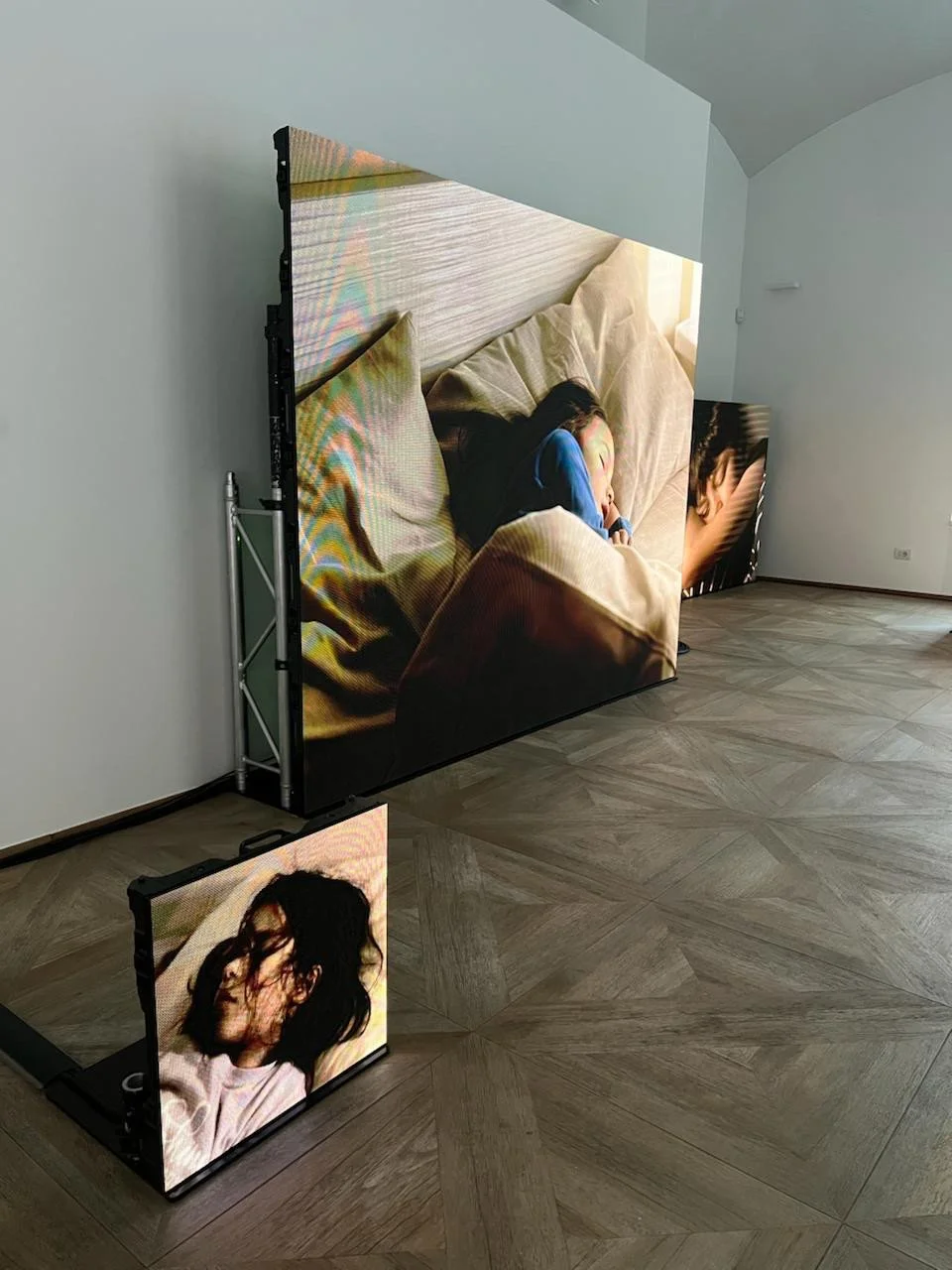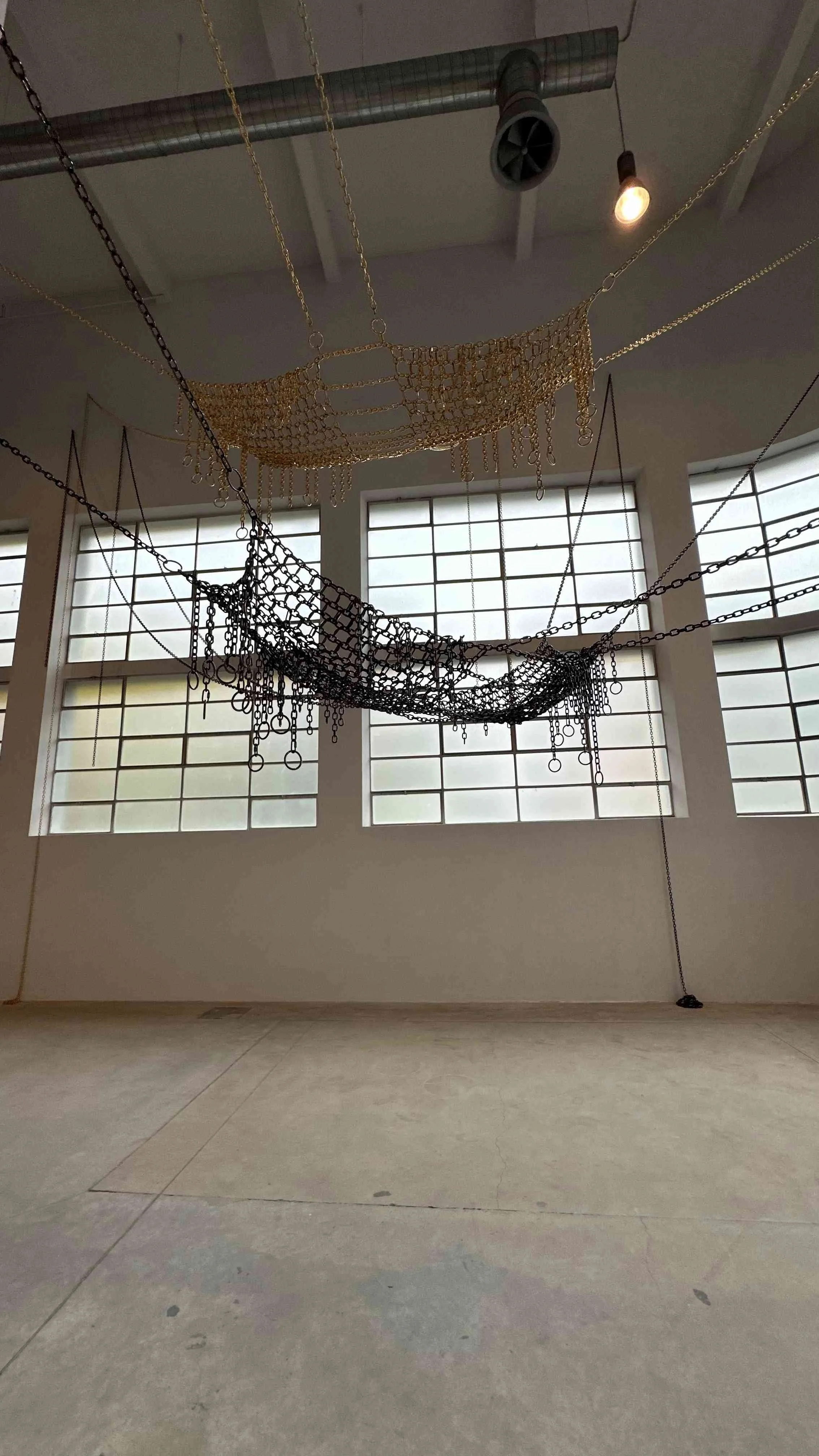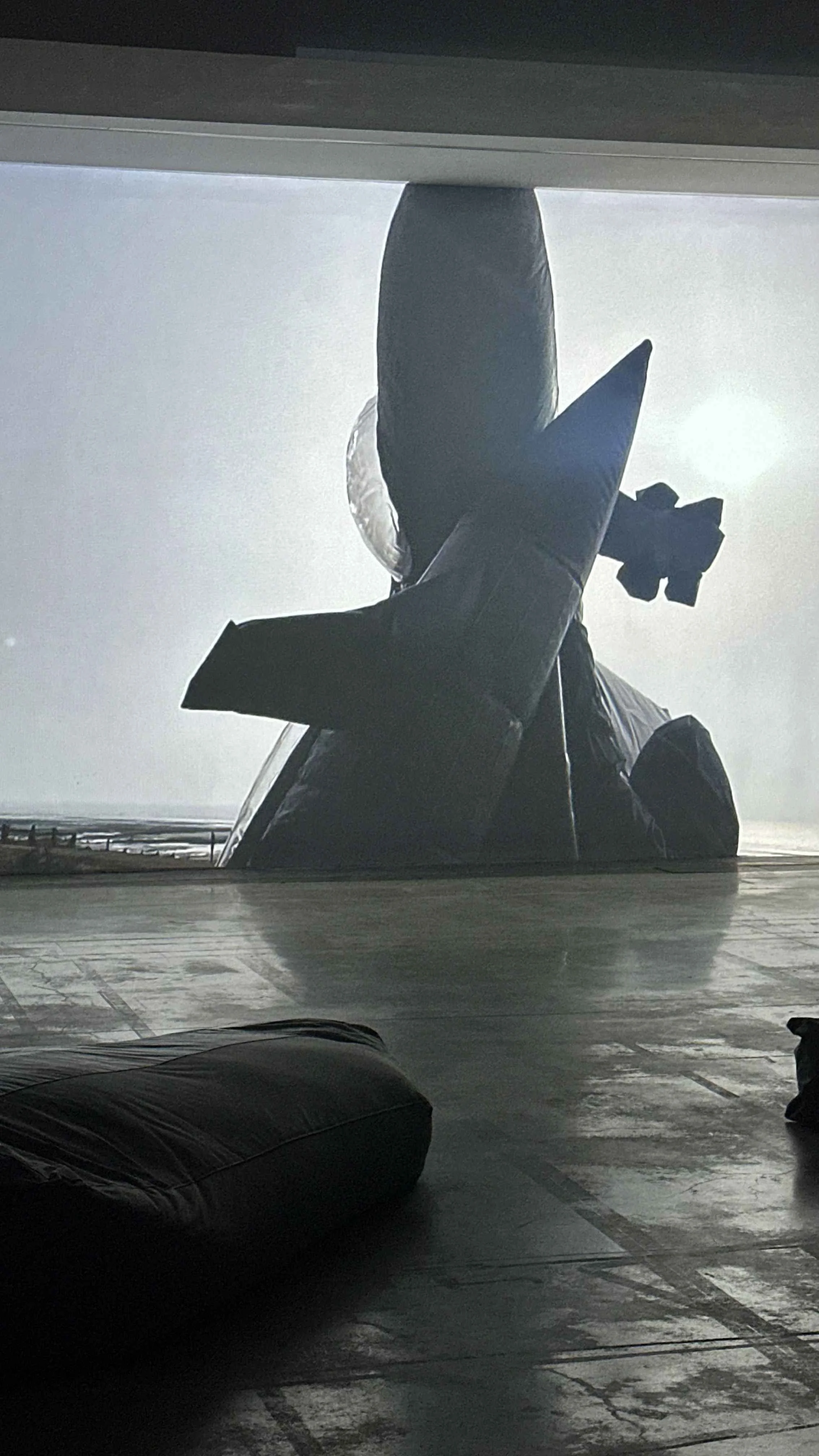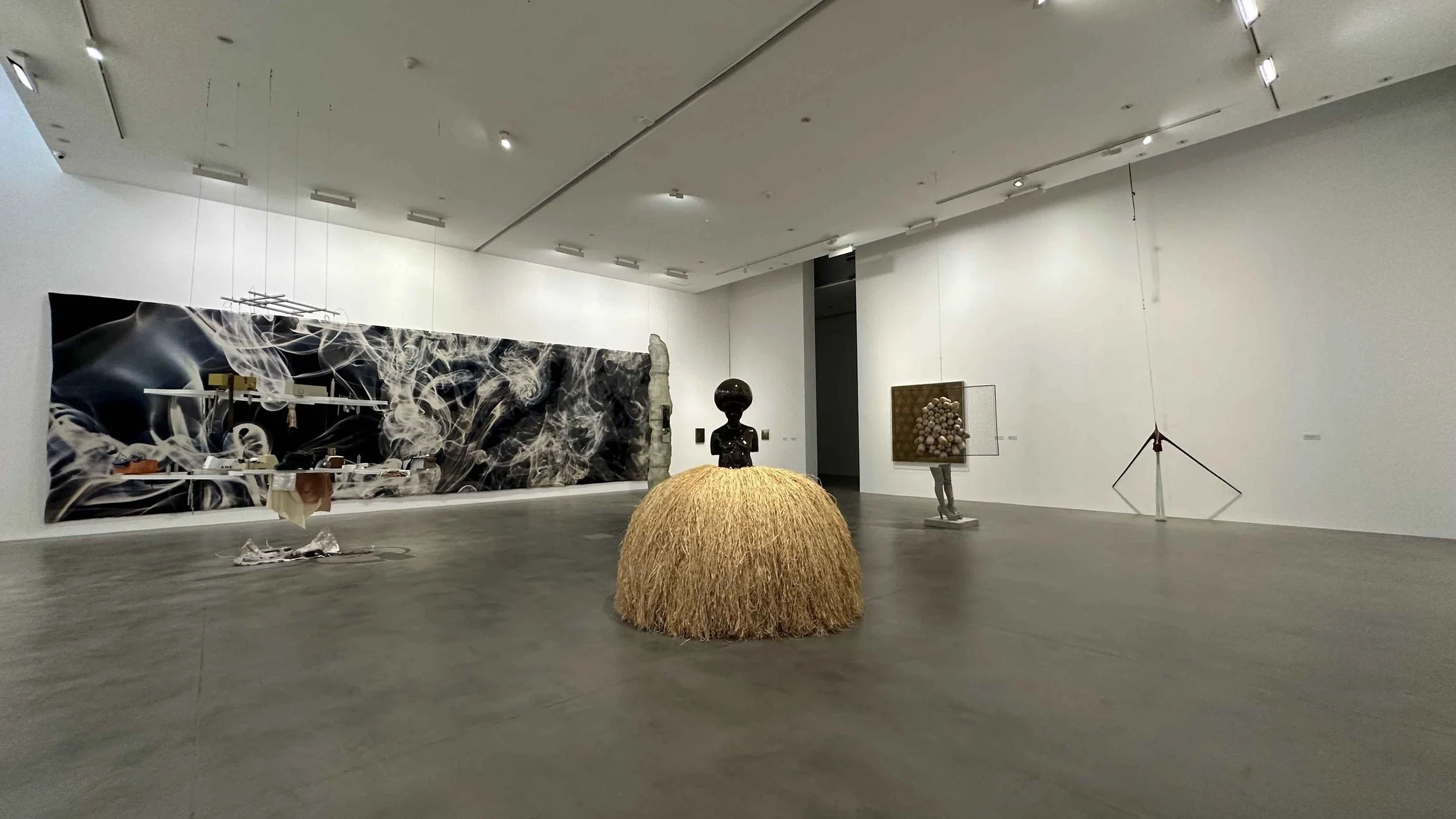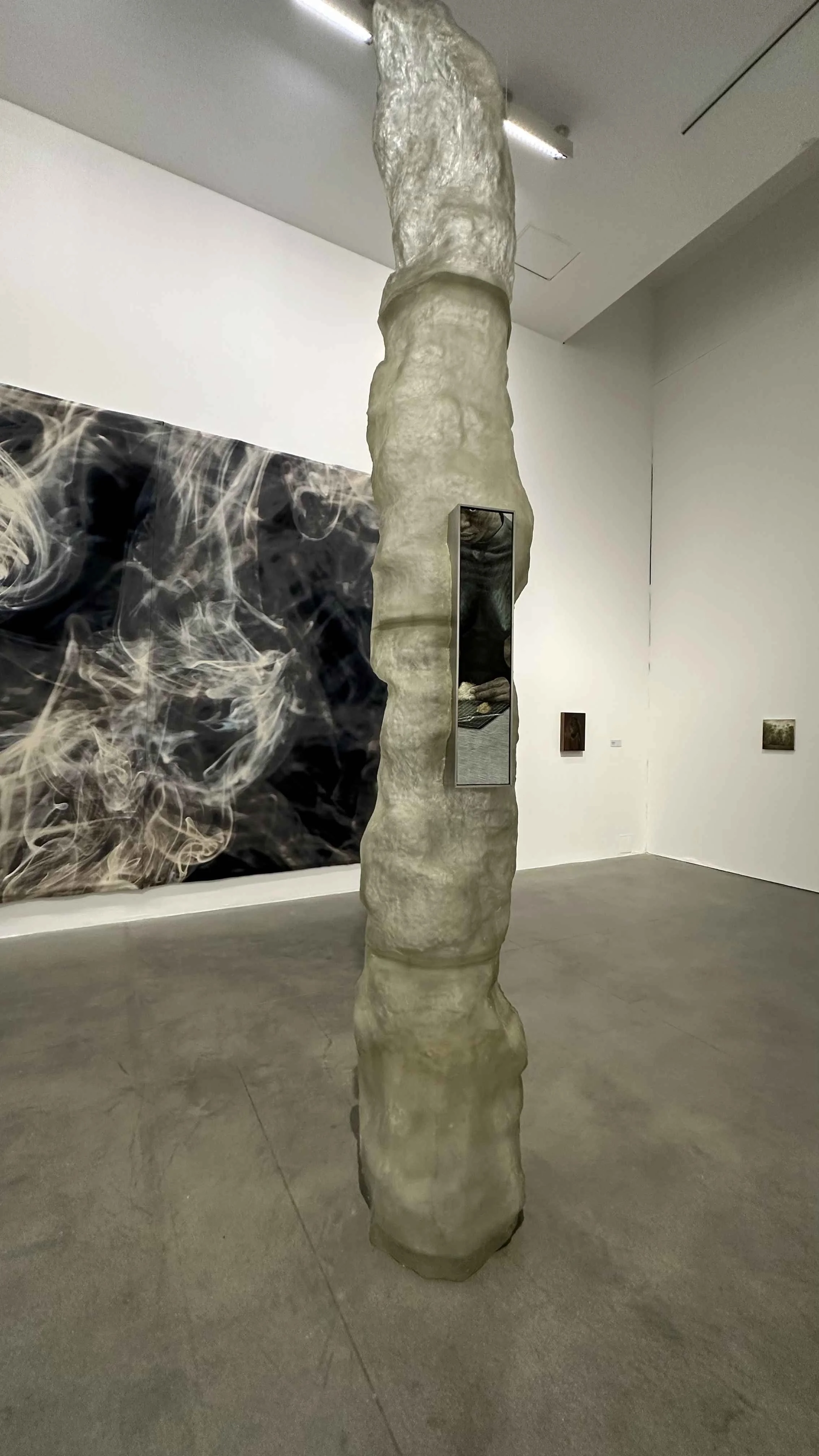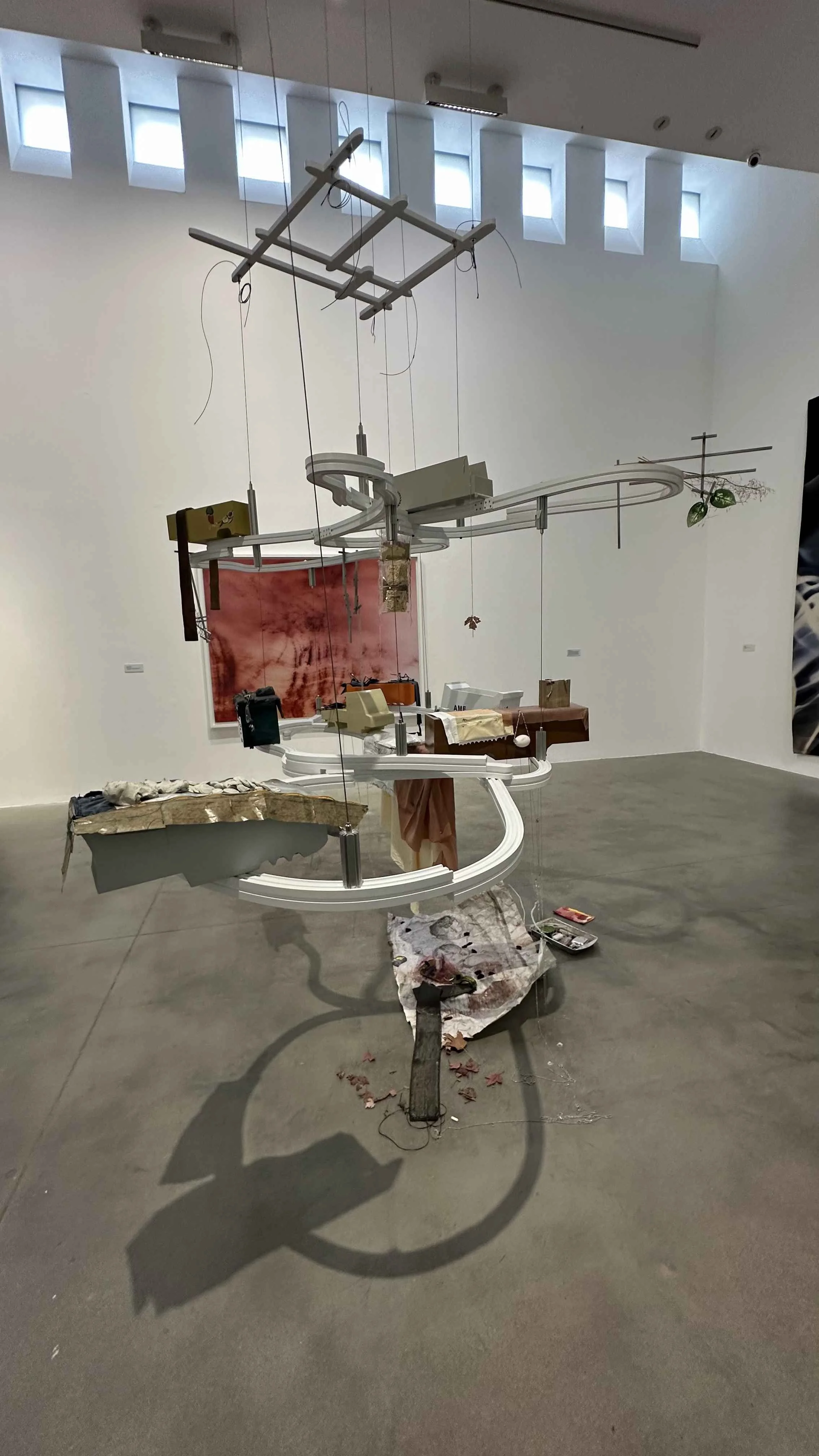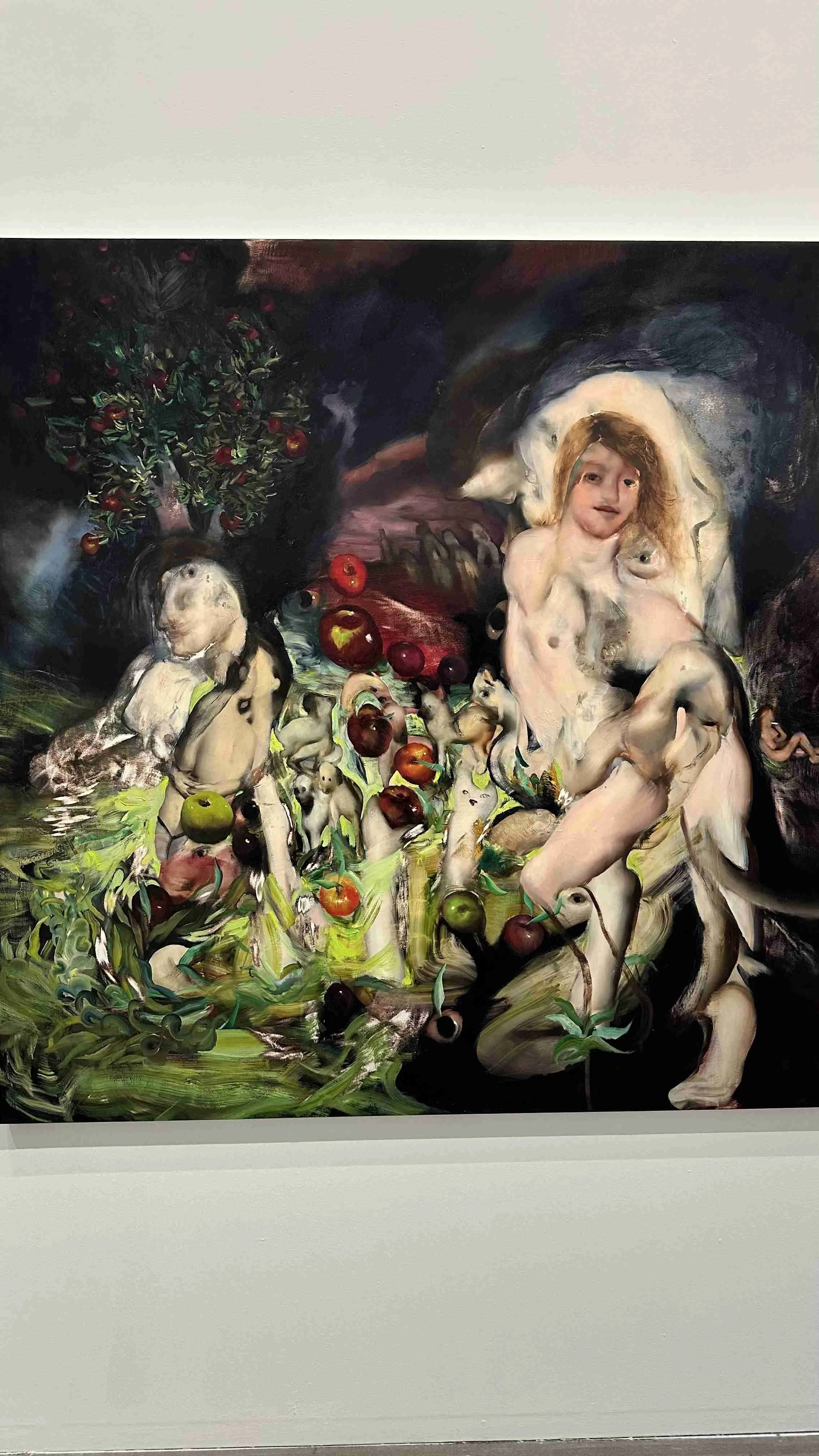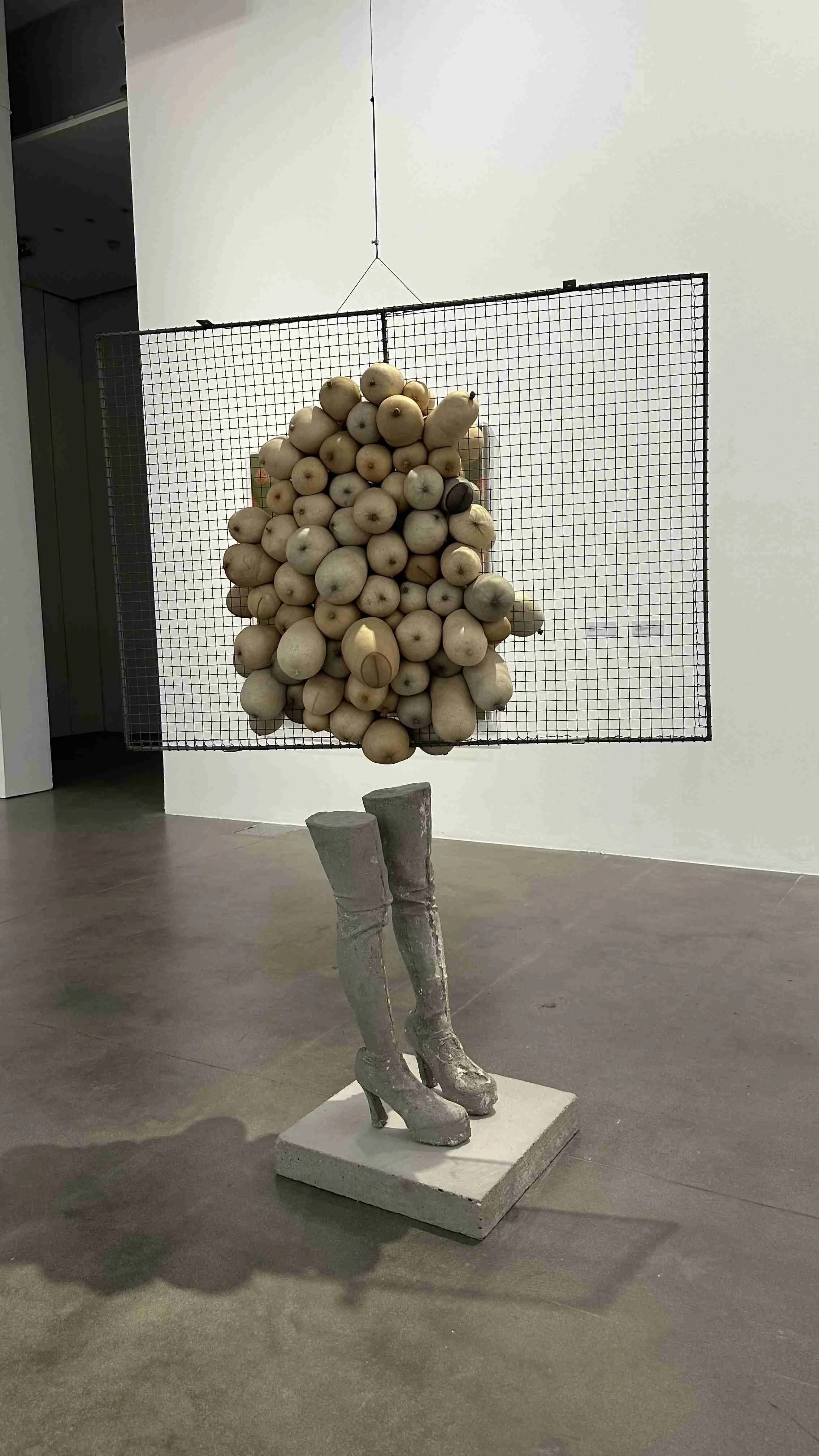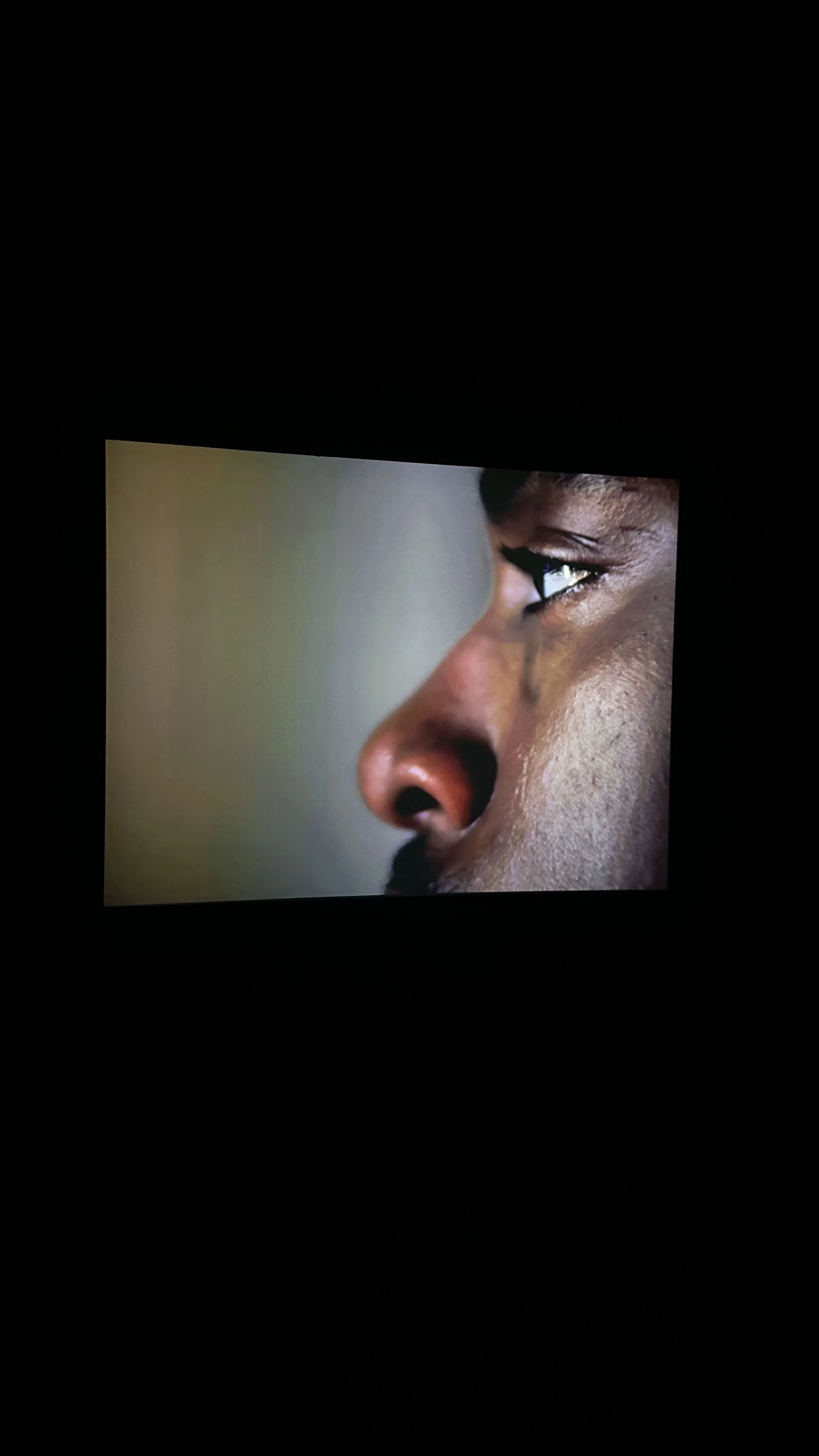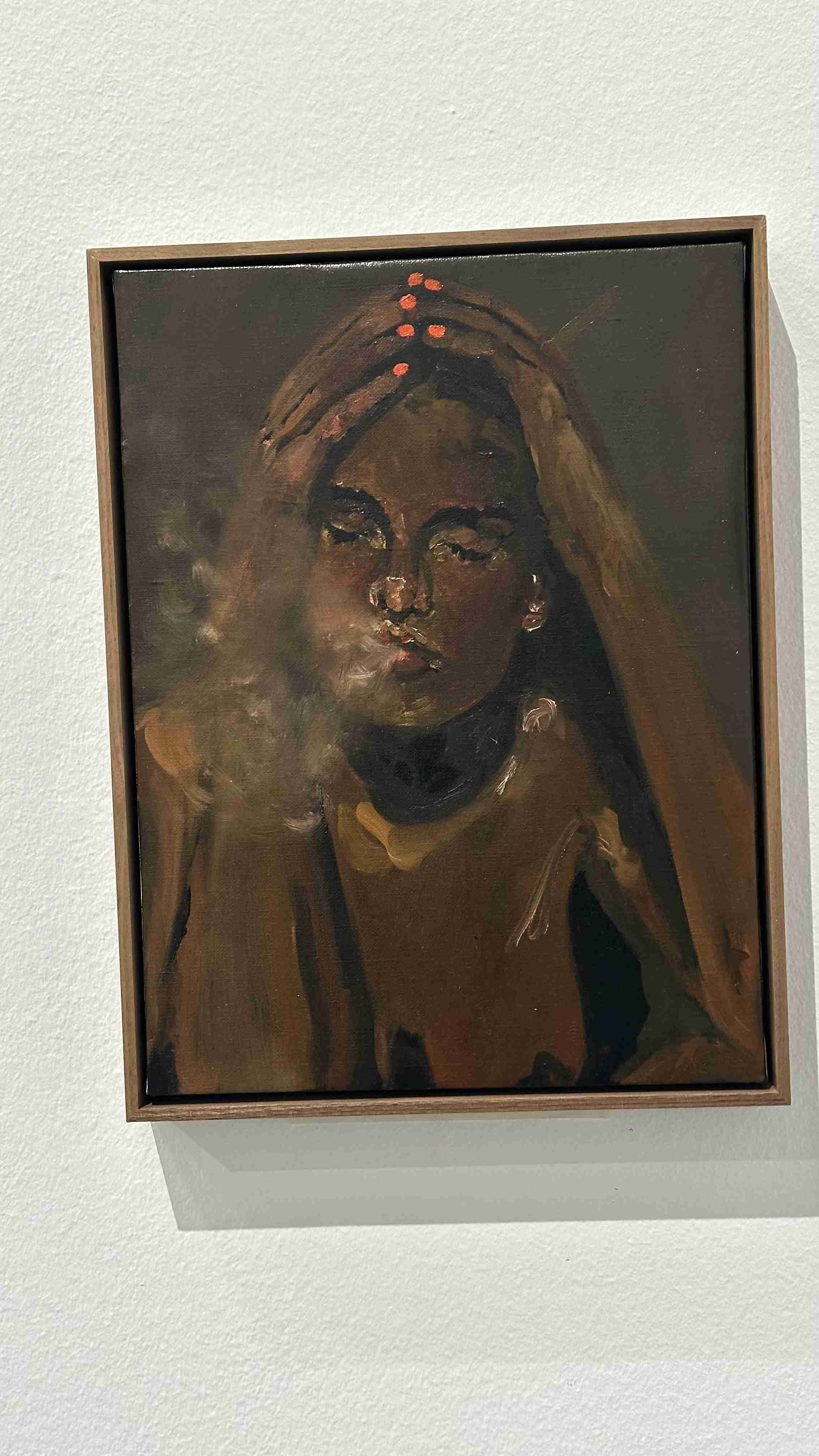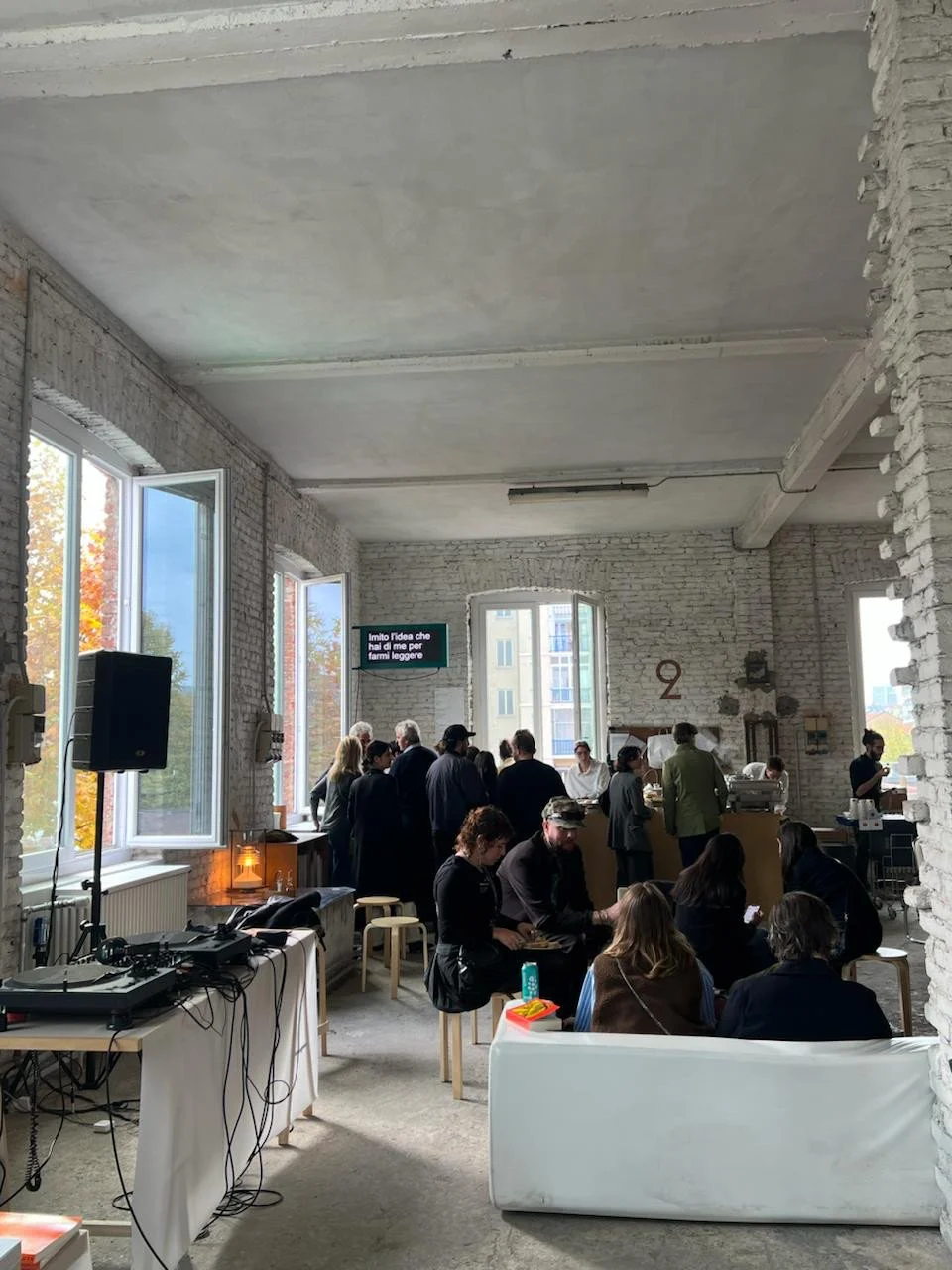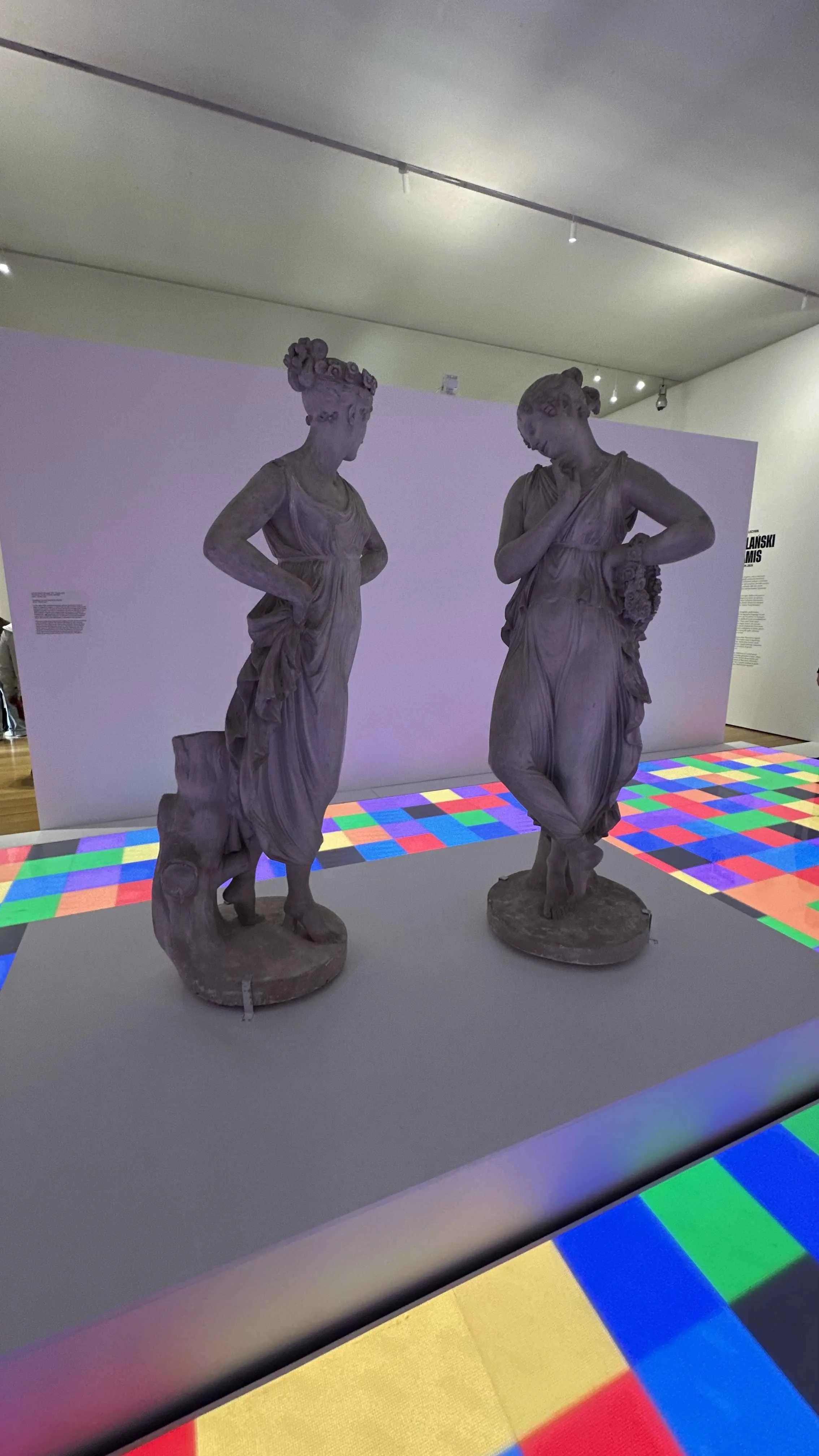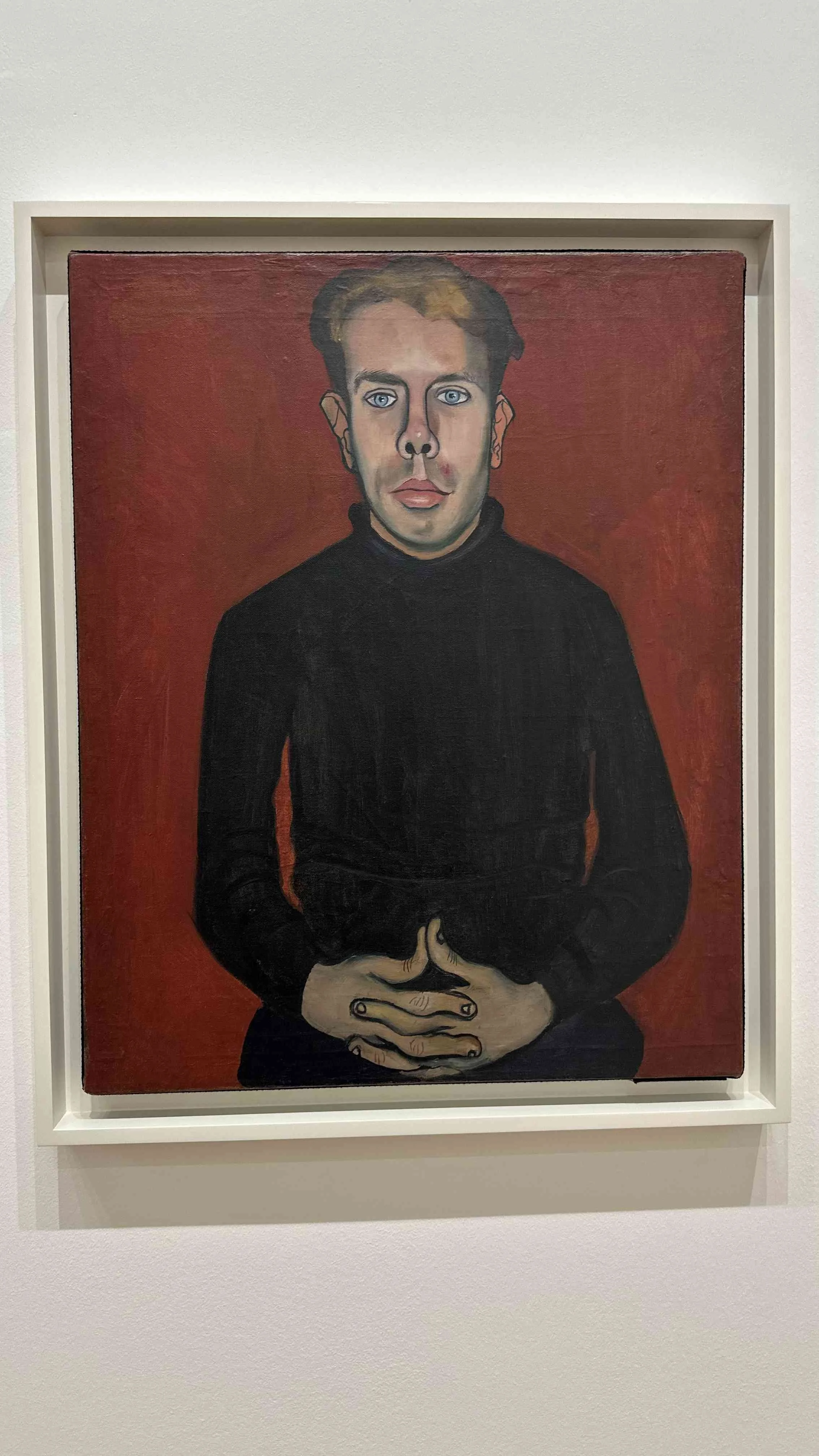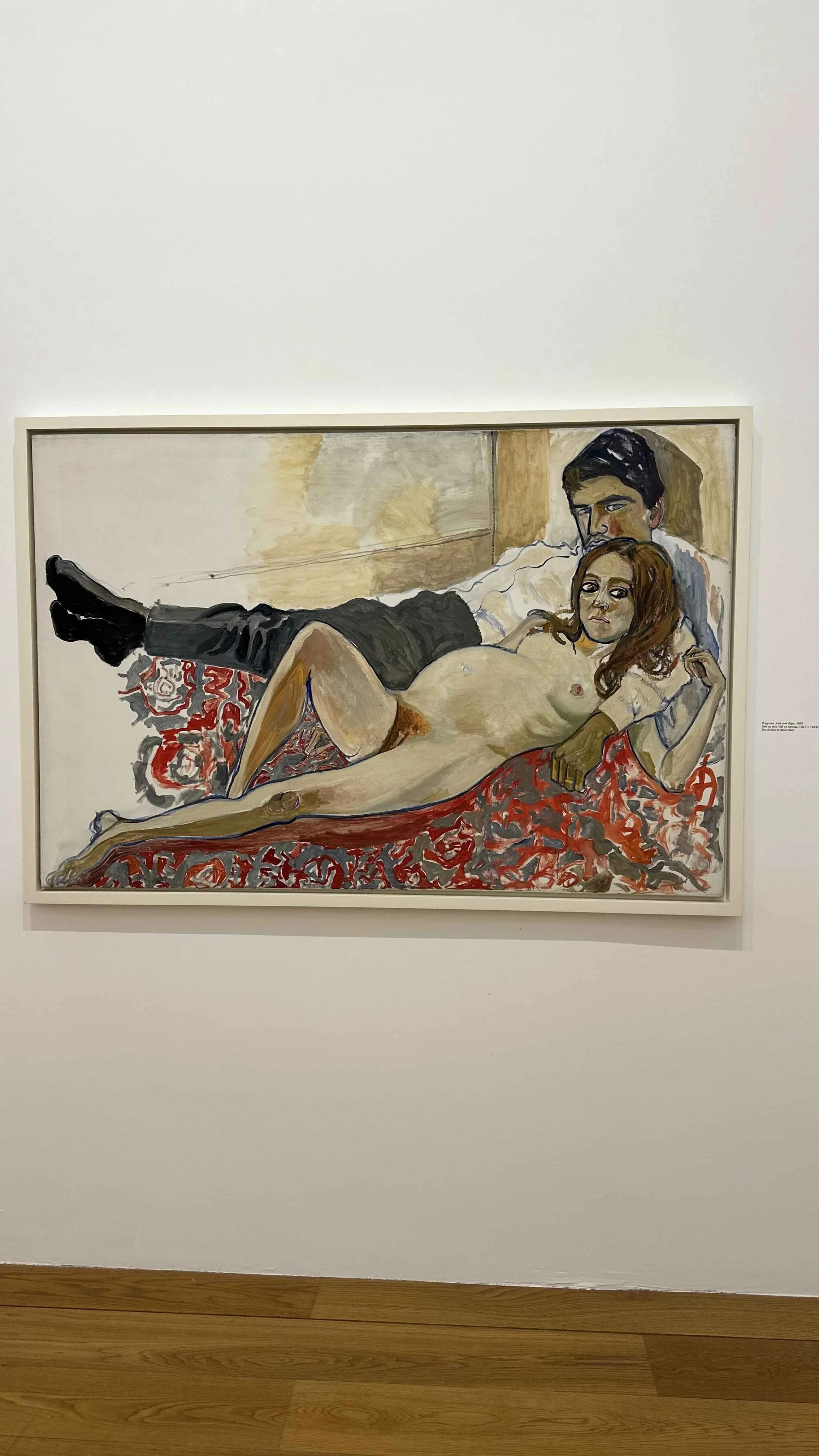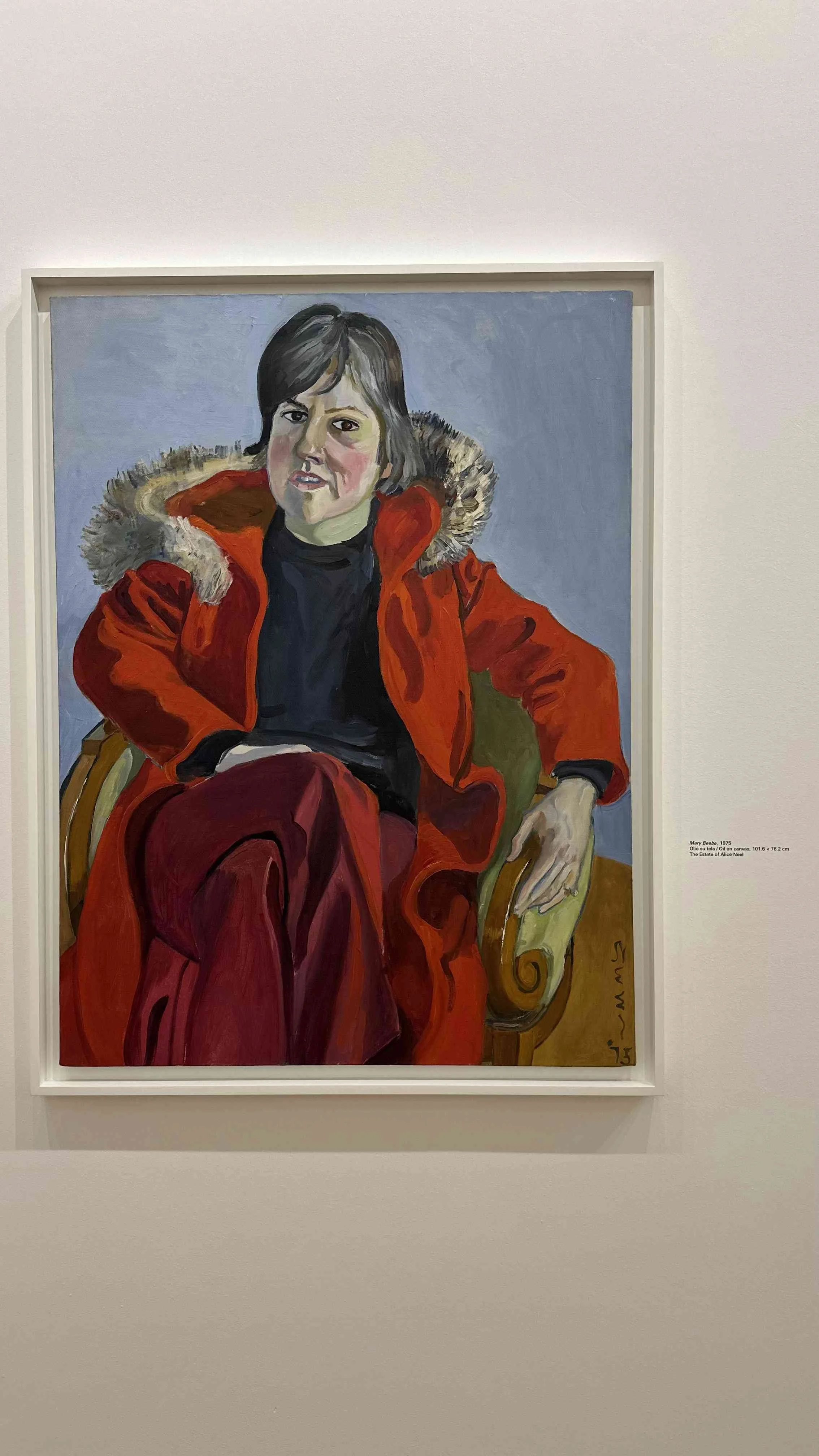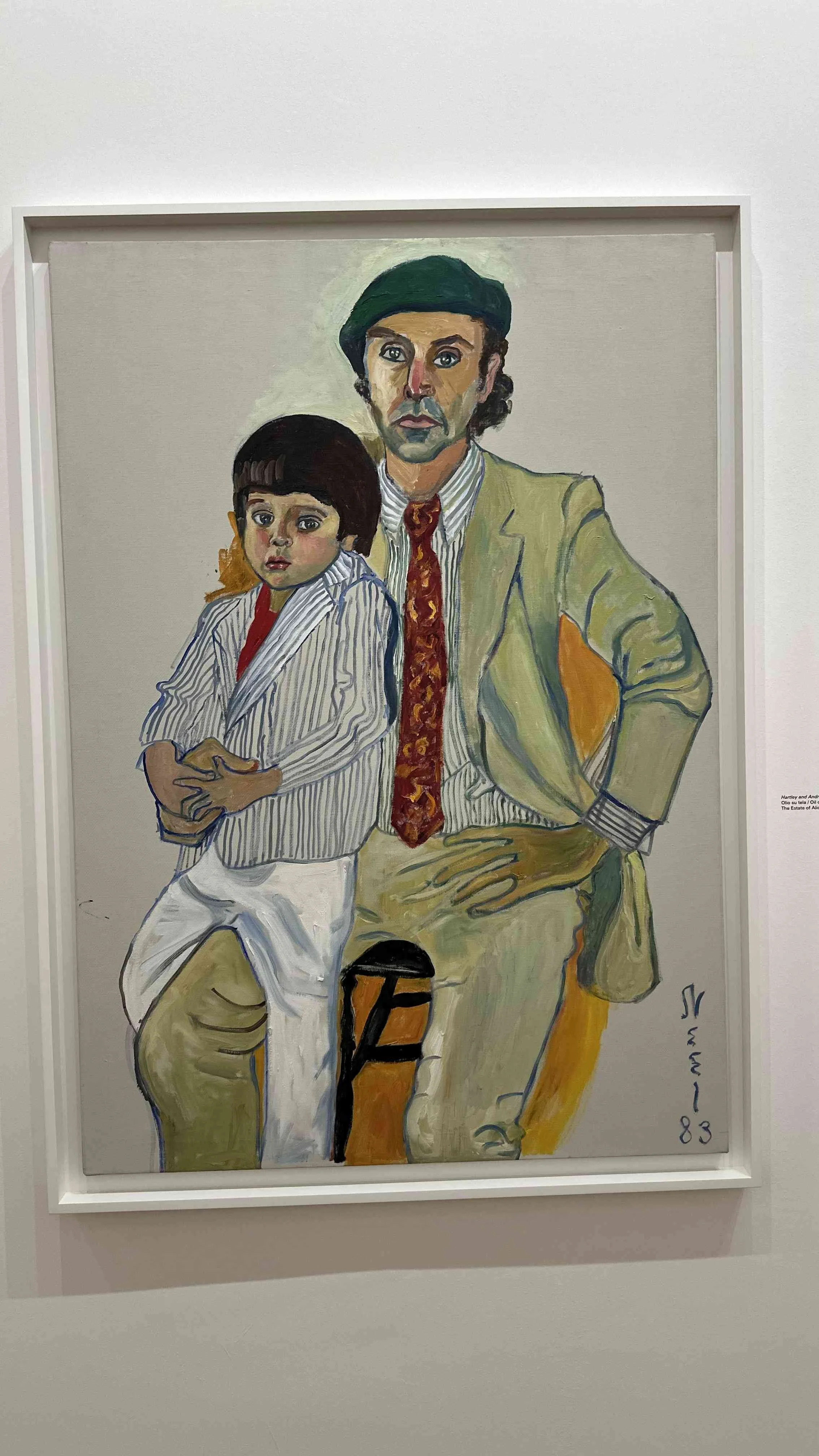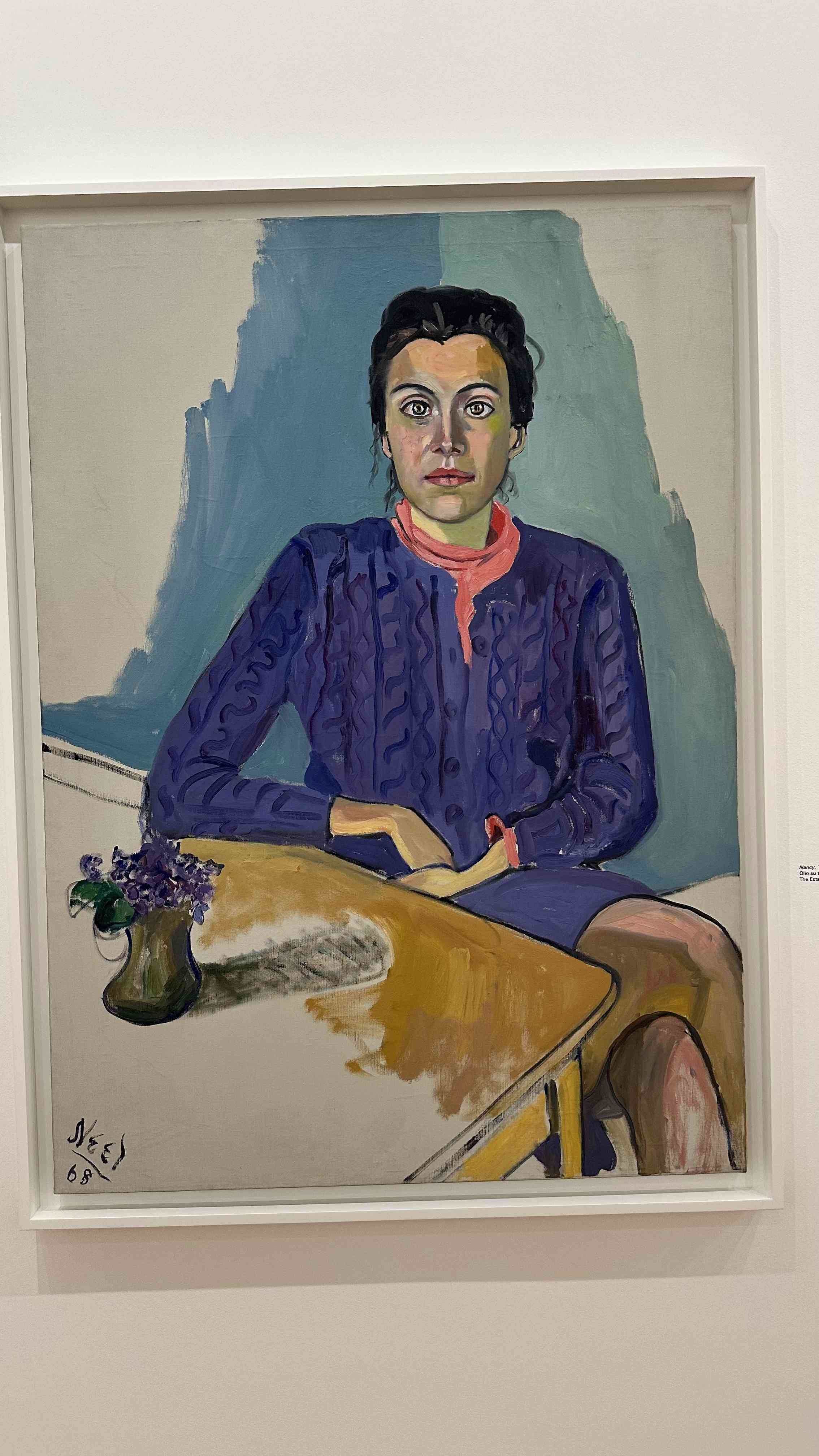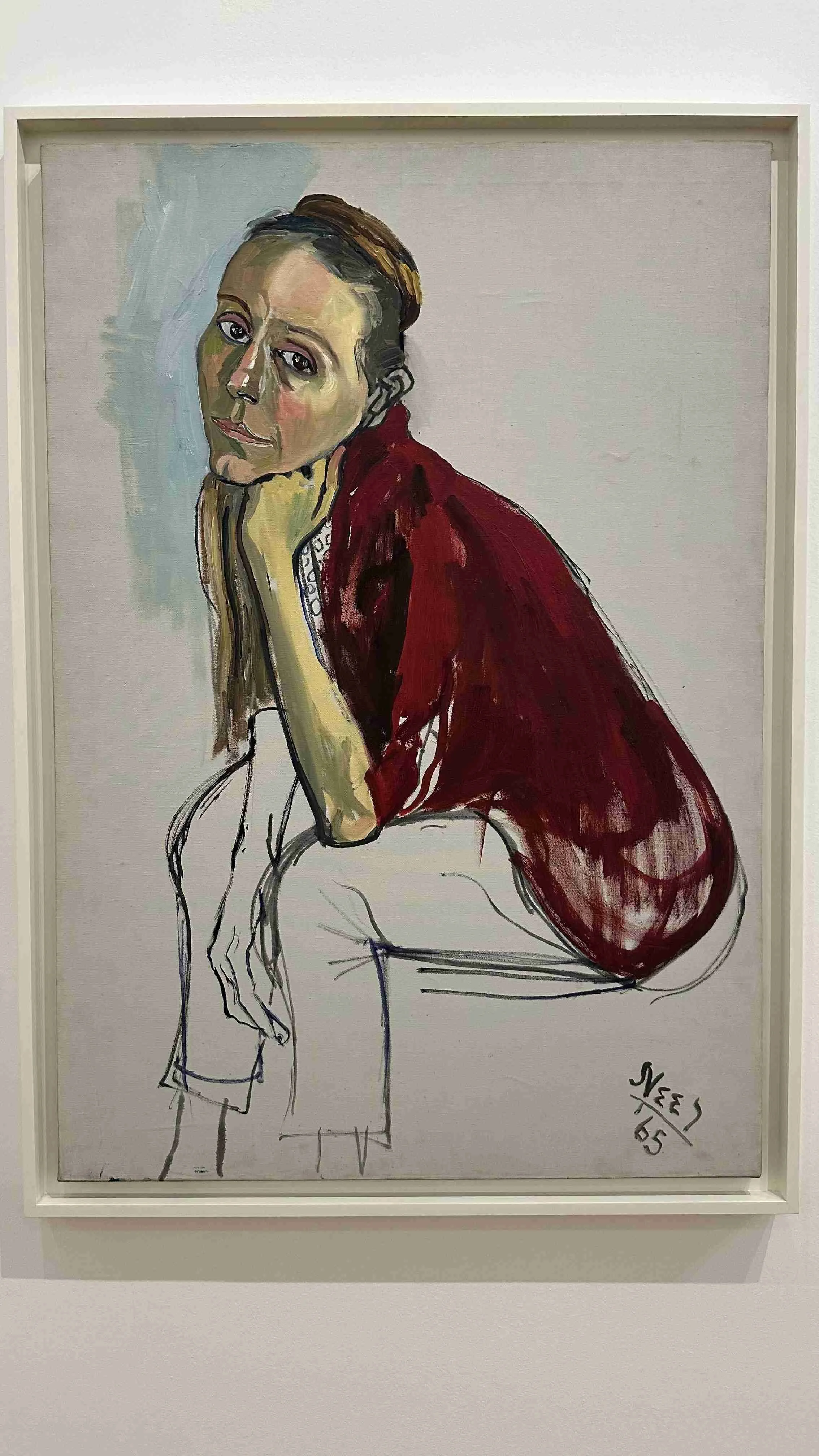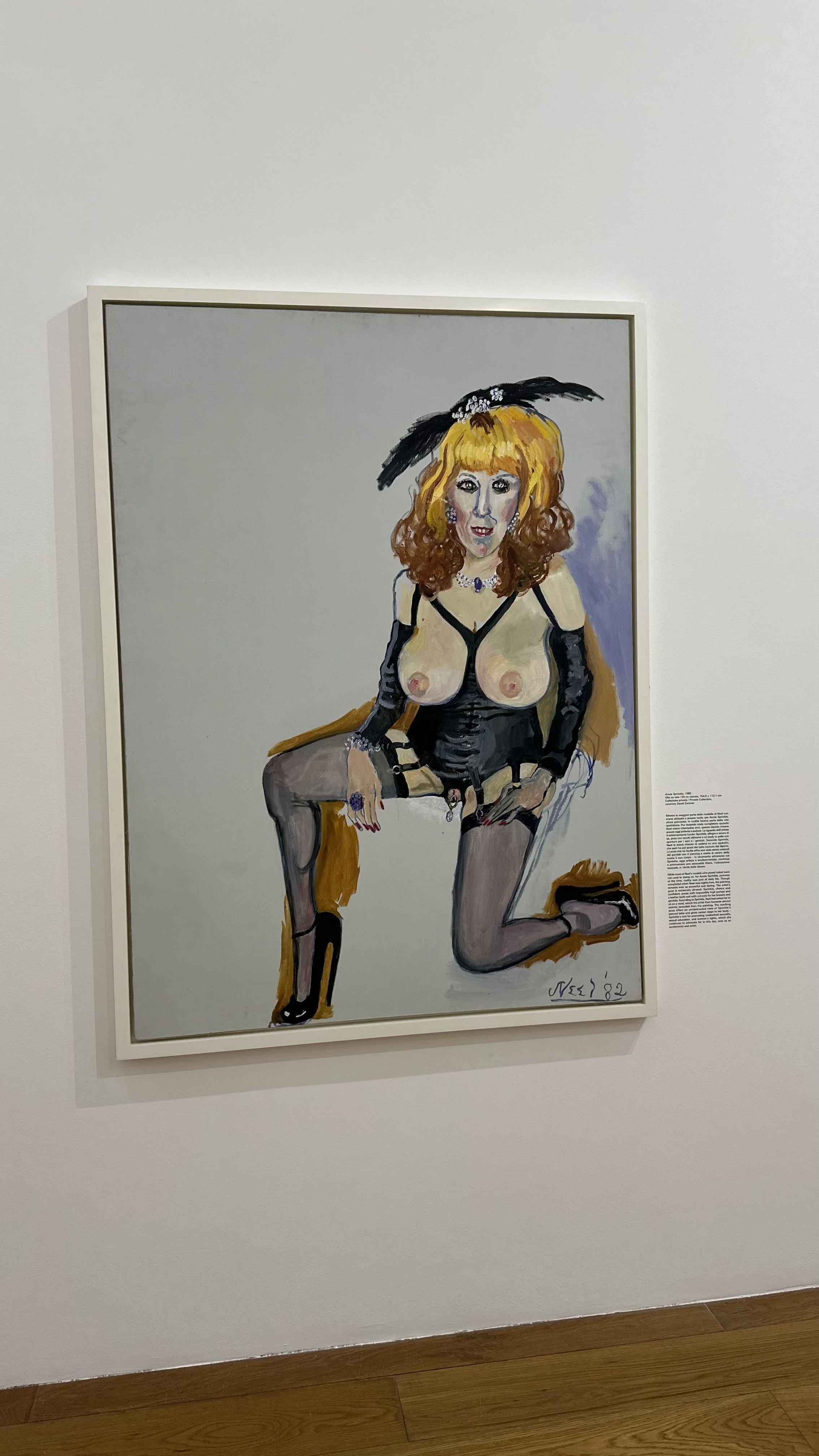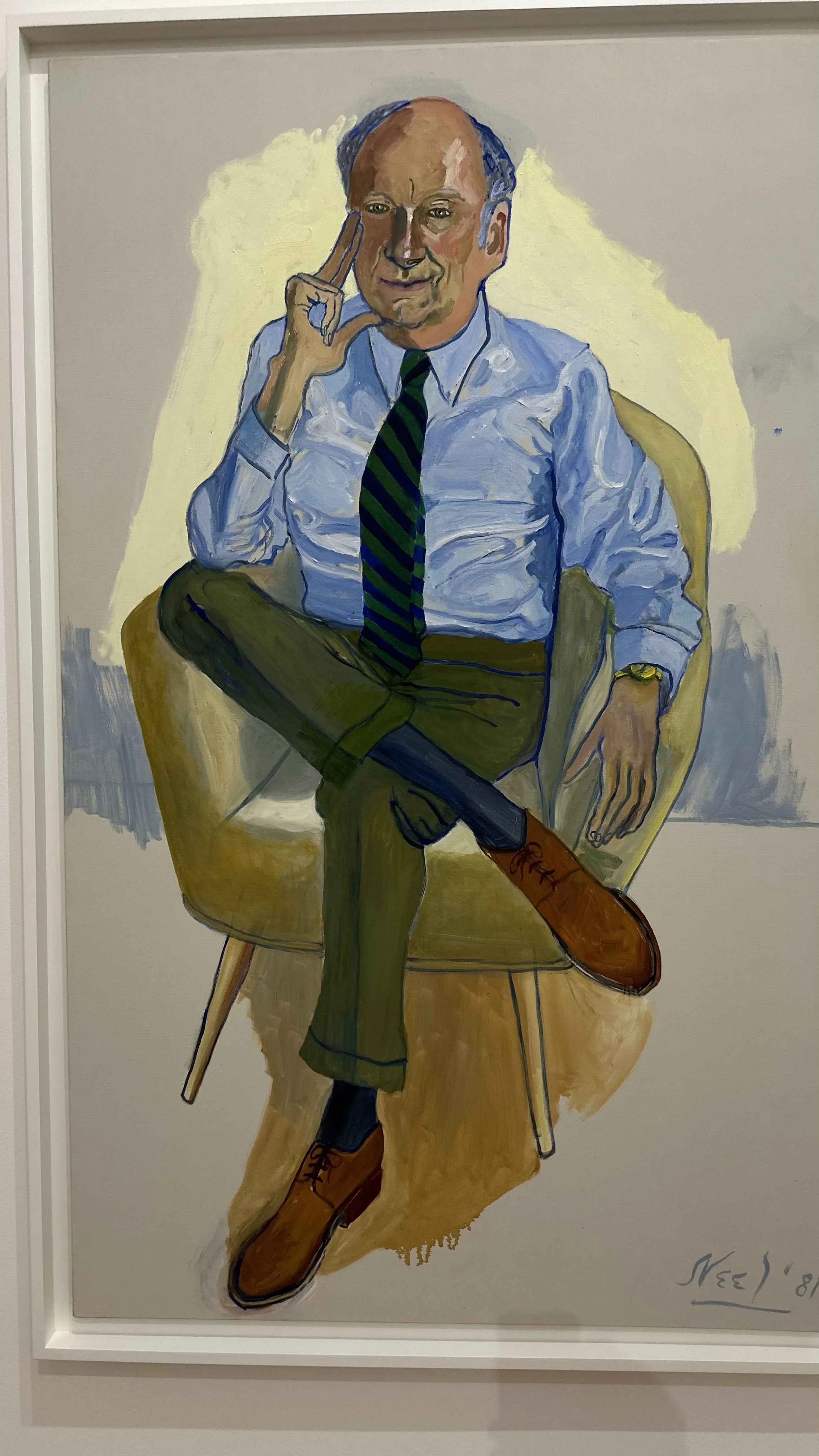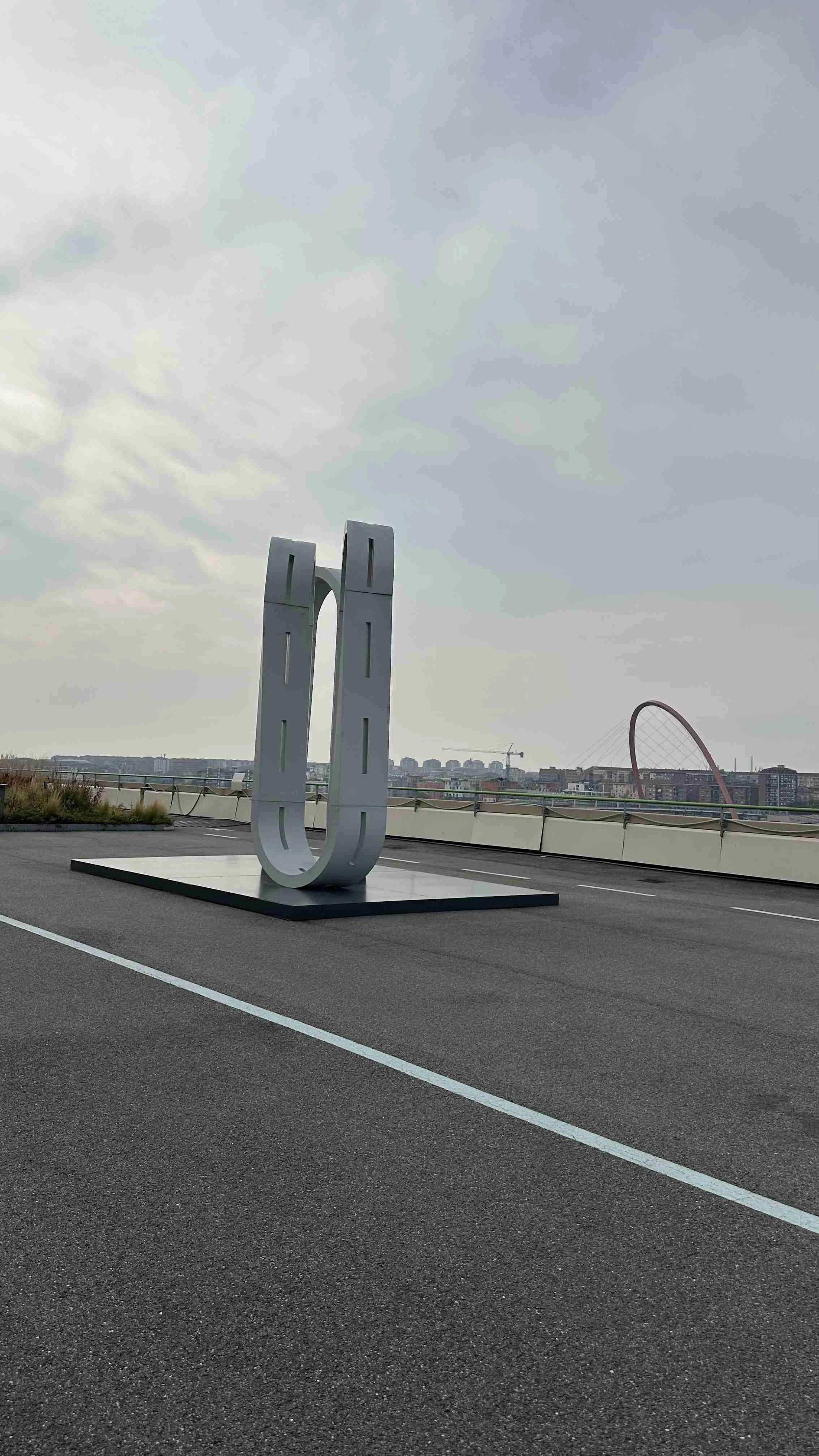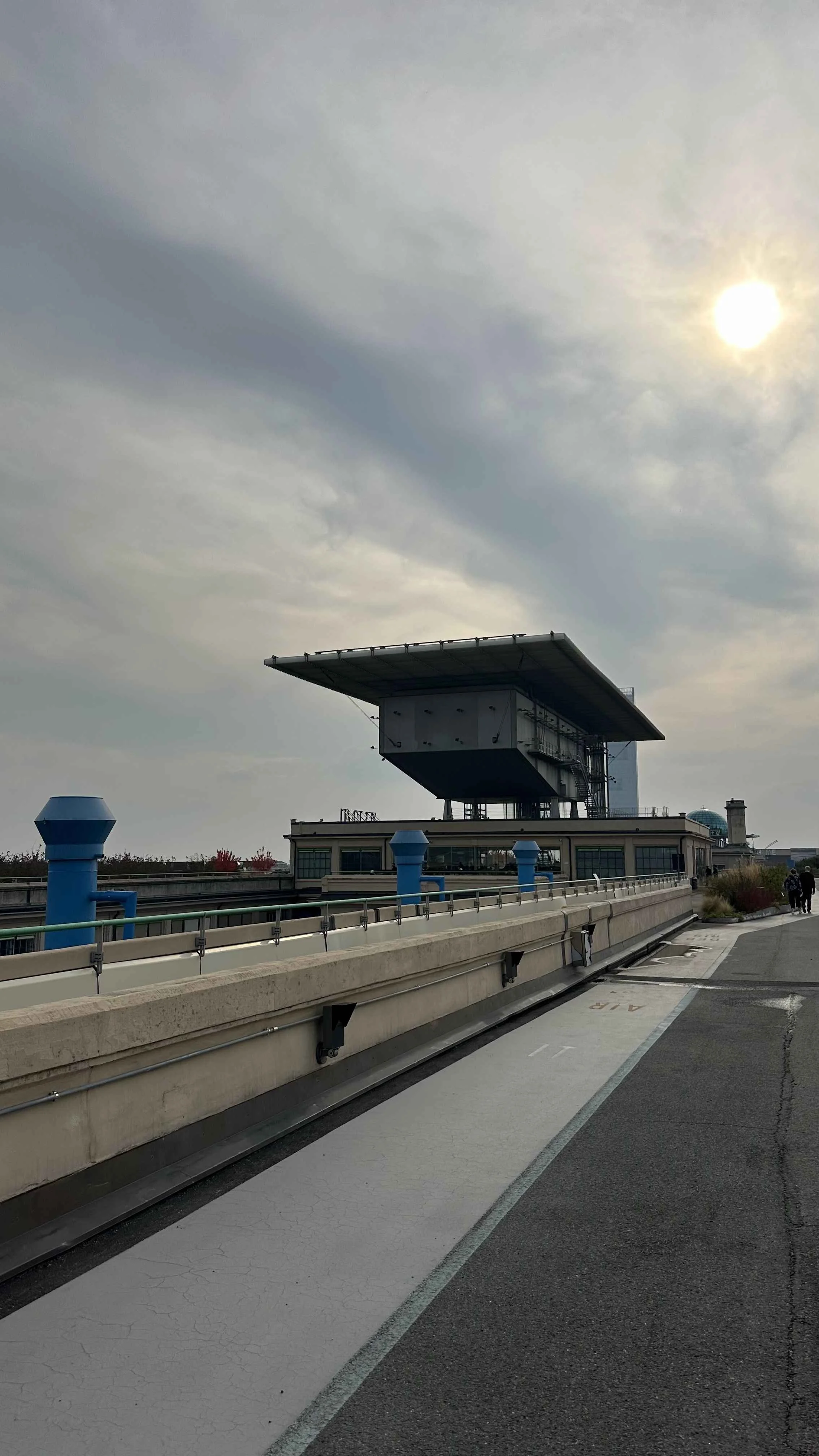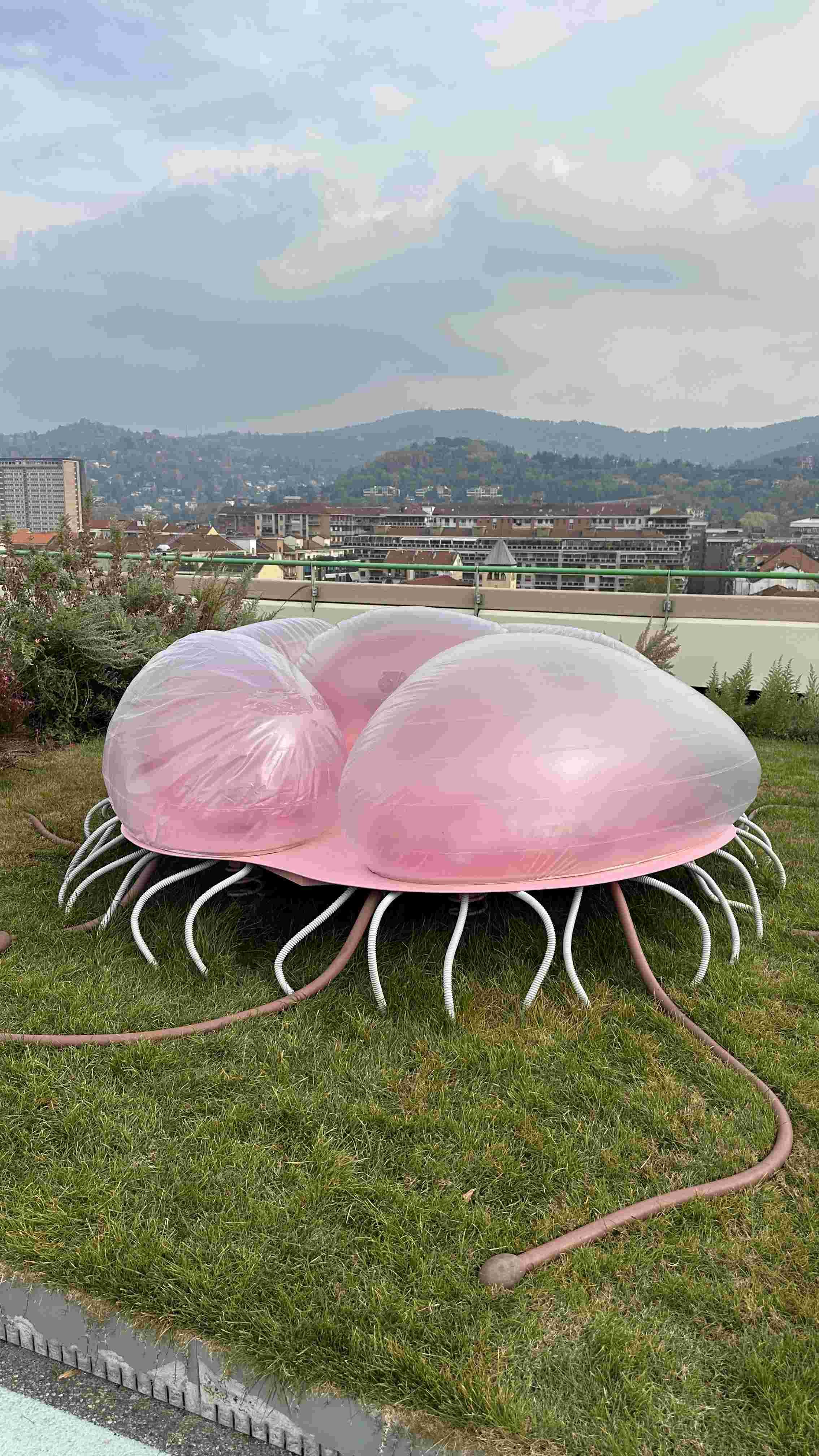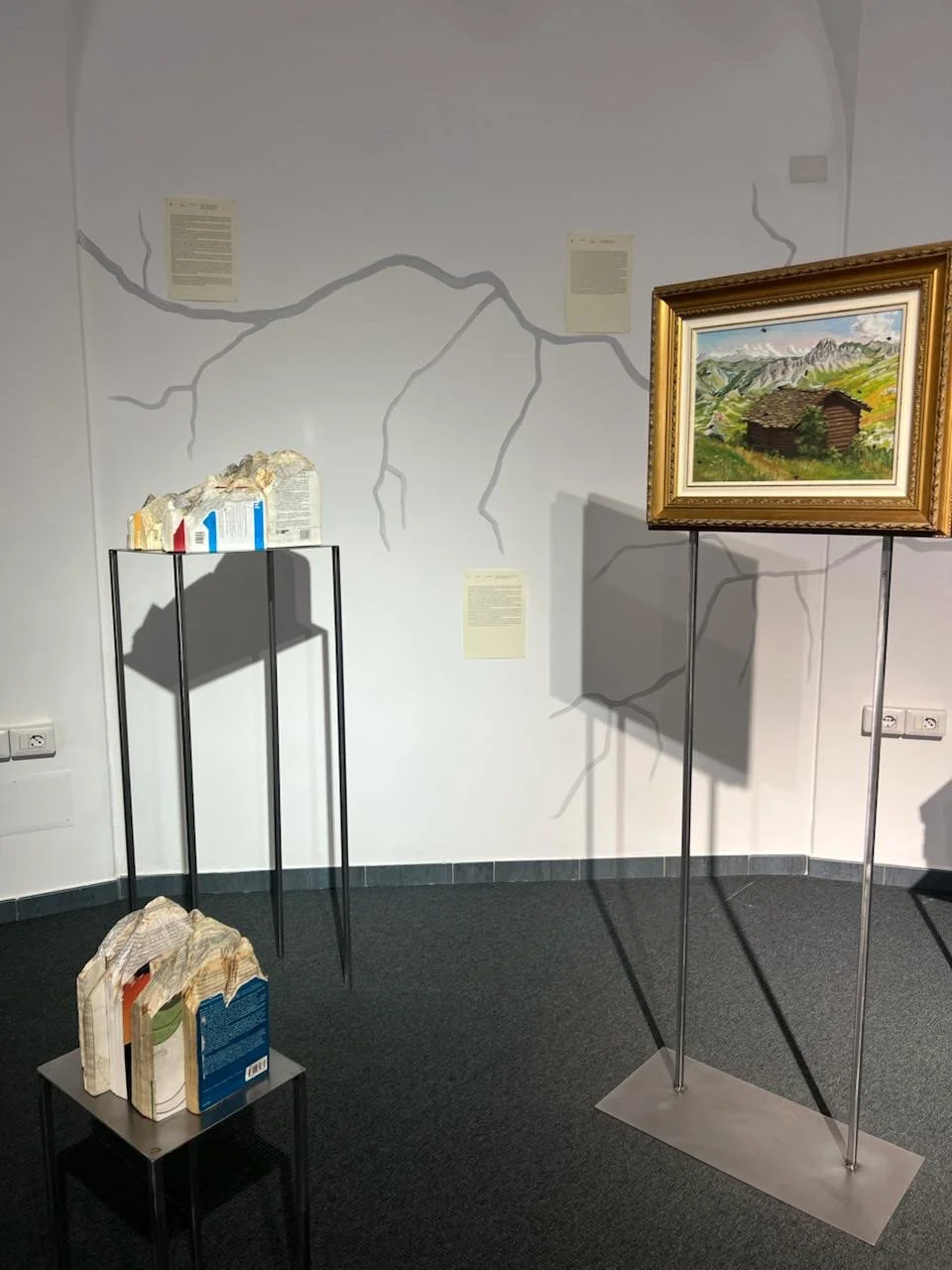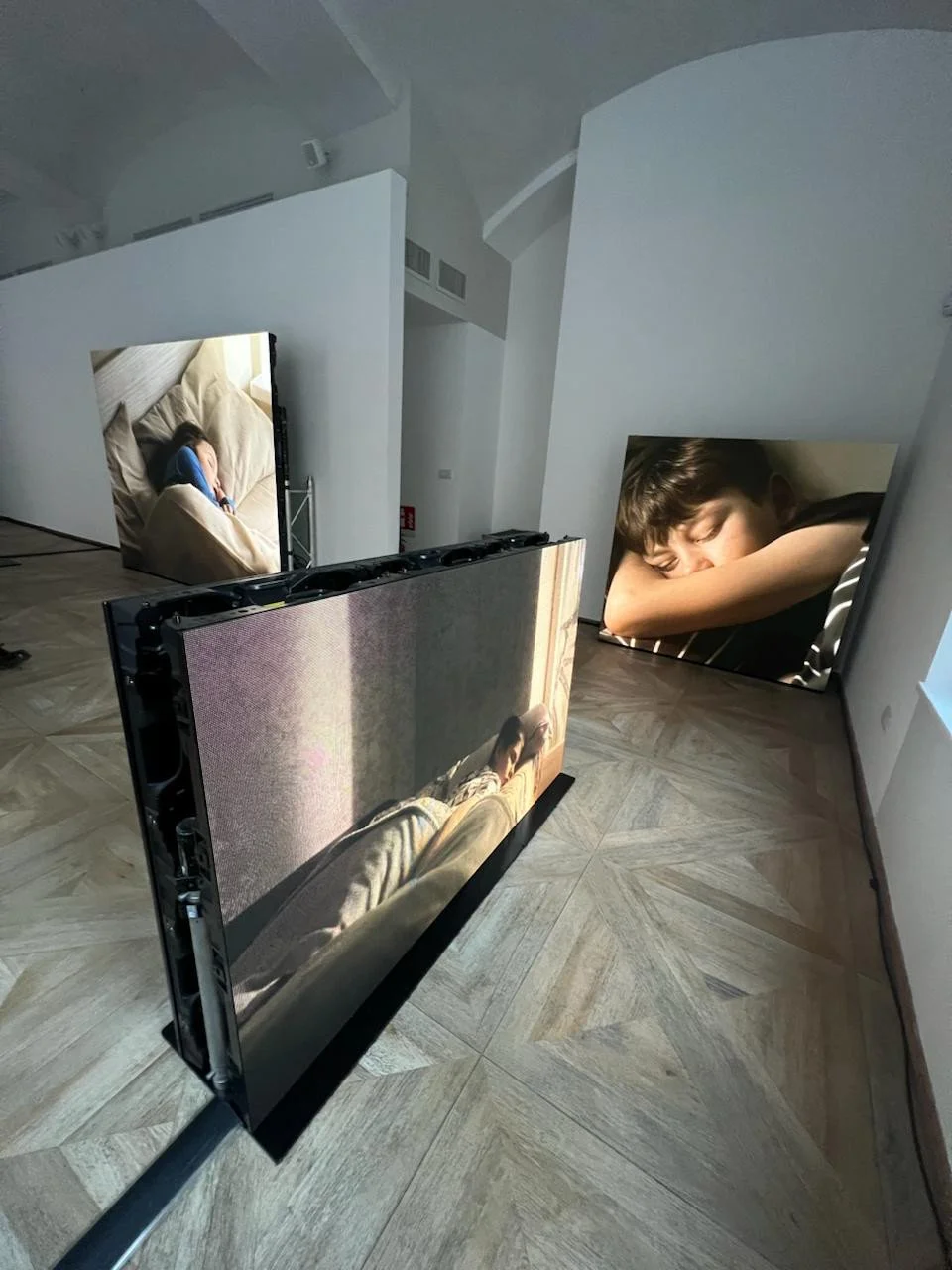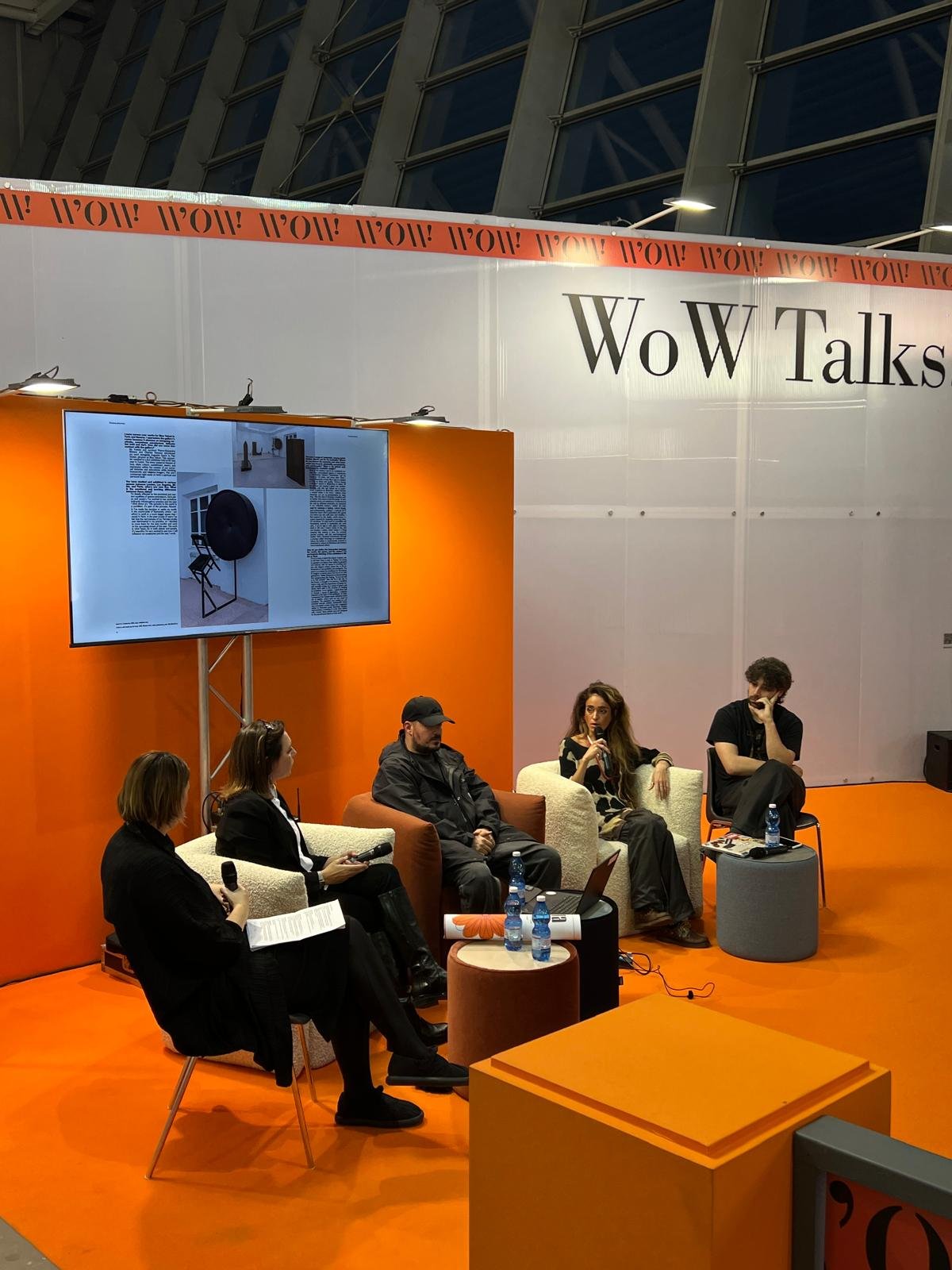All Around Turin Art Week 2025
This year again, at the conclusion of the Artissima fair in Turin, we visited the city and the projects presented during this 2025 Art Week, from October 30 to November 2, characterized by a remarkable quality of exhibitions. Here’s what we enjoyed the most among the institutional proposals from major foundations such as Metz and Sandretto, as well as a selection of collateral projects and exhibitions from independent spaces and art publishing fairs — including Cripta 747, Recontemporary, Associazione Barriera, and Pinacoteca Agnelli, among many others. This is our take.
Cripta747
Elena Francalanci, Andrea Bambini and Martina Rota
A stop that never leaves us disappointed is Cripta747, which, after opening its new venue last year in Via Giolitti 32, in the city center, enlivens the art week with several proposals. On the evening of October 31, the result of the IX edition of the Cripta747 Residency Programme was presented, with the performance and open studio of Elena Francalanci, choreographer and performer, and Andrea Bambini, composer and pianist, in collaboration with MOLT, a Berlin-based platform for music and visual arts, a community of creatives and various languages, from cinema to video art to visual and photographic research. The two performers, between dance, theater, and much use of the body, presented secrets, a performative and curatorial investigation into the unstable nature of memory and the role of emotion in shaping both individual and collective remembrance.
The evening performance changed the space and the mezzanine of Cripta747 into a living score, with tones of romantic drama, which took place from two points of view and in two settings, metaphorically reconstructed through a play of lights, shadows, and noises in two areas of the mezzanine space, with a theatrical and improvised dramaturgy, very emotional and moving, mental and physical at the same time. The exaggeration of drama and the movements of dance and music, a mixture of rhythmic and musical pieces, Italian or mainstream, made everything recognizable in one’s own life experience. With the two artists, a studio visit was then organized on Sunday, November 2.
On the second day, in the late afternoon in the outdoor area, Dear Lola & Prisci was presented, a performance by artist Martina Rota, which places the word, the verse, the noise, and physical movements, as well as spoken language, at the center of the choreographic action, examining their poetic resonances, imaginary deviations, and at times, their potential as a saving gesture.
Gallerie D’Italia
Jeff Wall & The Screen is a Muscle
I love giant works. I love photographic enlargements. Exactly like Wall’s works, in which something bad is always about to happen. But does it happen? At Gallerie d’Italia there is the exhibition Jeff Wall. Photographs, absolutely worth seeing. His large-format photographs, backlit in lightboxes, are not spontaneous shots but carefully constructed images, often inspired by classical painting or daily life. Wall recreates apparently ordinary situations that are full of social, psychological, or political meaning. His works are extremely fascinating because there is a deep uneasiness that often stirs beneath the surface, more visible in some images than in others.
Jeff Wall, born in Vancouver in 1946, is one of the most significant and influential photographic artists active today. For over forty years he has moved between spectacular staging and documentary observation, creating images that examine every aspect of contemporary society: at once familiar and unsettling, they raise everyday situations to strange and dreamlike contexts. Presented at life-size, his images are among the most famous works of contemporary art.
His art is influenced by the work of many great photographers and painters, but also by literature and cinema, especially Italian Neorealism, with its alternation of worldly life and drama: a filmed, photographed drama within worldly life. Forty years of enormous backlit photographs, looking, speaking, and reflecting on famous riddles. A cleaner cleans the floor of a deserted villa, as if something has been spilled on it (but what?). A woman looks at a sock, a child lies on the ground in front of an exhausted father, two lovers (perhaps) look at each other and do not understand one another. Everyday clichés, small immense dramas. Even when they seem documentary, his images are the result of complex stage construction. In this way, Wall examines the line between truth and fiction, between seeing and representing.
Wall’s art always invites you to look inside a tableau, to search for clues, to notice details, to ask yourself whether what you see is fiction or a fragment of reality. Many of his works deal with issues such as urban alienation, solitude, violence, or power relations in contemporary society.
In fact, I had gone to Gallerie d’Italia to attend the opening of The Screen is a Muscle. “The mind is a muscle”: the idea that thought and bodily movement are inseparable—the body thinks and the mind acts through it. The “being” on stage, not the “representing” of something. The Mind is a Muscle is a performative manifesto of postmodern dance: an investigation of the body as an instrument of thought and of physical action as an aesthetic and cognitive act. With this work, Yvonne Rainer in 1968 shifted dance from spectacular stage to the realm of reflection, process, and authenticity of gesture.
Following this path, curator Luca Lo Pinto took inspiration for the project The Screen is a Muscle. The exhibition is conceived as a score of video works that do not follow a theme but develop a visual and sound trajectory that is rhythmic, heterogeneous, and coherent at once. Installed in the screening room on the lower floor, the project brings together experiments with moving images created by artists whose imaginations deal with the body, the digital, gender stereotypes, and urban nature, expressed in a sensual, emotional, and poetic way, offering a space of freedom and without rhetoric to the eyes of visitors.
The videos presented are by Bruce Conner, Julia Scher, Shahryar Nashat, James Richards, Vijay Masharani, Eva & Franco Mattes, SAGG Napoli, Anastasia Sosunova, Low Jack & Invernomuto, Tommy Malekoff, interspersed with music by Martina Ruggeri. The videos are projected in sequence, in a circular rhythm that forces the viewer to move, creating an immersive and dynamic situation. Punctuating the projection, adding another layer of dramaturgy, are short sound interventions conceived specifically by Martina Ruggeri, which interrupt and introduce new rhythms in the composition.
Fondazione Merz
Push the Limits
In the top 3 of the projects I visited, the exhibition PUSH THE LIMITS at Fondazione Merz, an exhibition project curated by Claudia Gioia and Beatrice Merz. In the beautiful venue of the foundation, illuminated by the early November sun, the exhibition examines the ability of art to respond to current and urgent issues and to become a bearer of change, rejecting resignation to immobility.
It brings together 20 women artists of different generations and backgrounds who make the overcoming and transformation of imposed and assumed limits their artistic language. In renaming the second edition of PUSH THE LIMITS, a phrase by Mario Merz was added: “culture undresses and makes war appear.” The reference is to the complex role that culture has always played in situations of conflict and to the need for culture to remove a softened image in order to show its combative nature. The exhibition puts into play actions, images, and voices of contemporary artists active in the political field, translating real experiences into sharing; a collective action contains an aesthetic principle — freedom and execution coincide in giving shape to new words and forms, in response to the crises of the present.
Some works interested me greatly, in particular the 2025 installation Memory Table by Katerina Kovaleva, artist from Moscow: a large parachute with images of angels is hung above a table and is reflected in 40 metal plates filled with mirrors and 40 pieces of stones, like slices of bread. A military table, a table without diners but crowded with presences, with different and tragic destinies and reckless political choices that have made all humanity a victim of war.
Another very beautiful work is that of Mirna Bamieh, born in Jerusalem, Sour Things: the Pantry. The artist, before leaving Ramallah after the beginning of the bombings in Gaza, emptied her pantry: what was happening in her kitchen was only a small echo of what was taking place outside. The installation suggests questions: how can the everyday life of small and large gestures such as preparing preserves and storing them in the pantry survive? How can one oppose the sense of duration and of things prepared for tomorrow to bombings, to destruction that sweeps away everything and even life itself?
Of great strength and importance is also the video work by Emily Jacir, who for eight days films, with a video camera, the route she must take from Surda to Birzeit University, crossing the Israeli-Palestinian border.
Fondazione Sandretto
News from the Near Future
Also of great impact is the proposal by the Fondazione Sandretto, which, on the occasion of the Foundation’s 30th anniversary, opens to the public a selection of some famous pieces from its collection, without any trace of melancholy. About 150 works are exhibited in the spaces of the Foundation and in the National Automobile Museum of Turin, gathered from the early 1990s up to today. Inside the Foundation’s spaces, historical works are presented together with recent or never-before-shown pieces, in a whole that is not a chronological narration but a visual, emotional, and conceptual archive.
News from the Near Future is the title of the exhibition, underlining the social and political lens that artists use to examine the areas of friction between individual and collective identity.
In the Foundation’s spaces, the works in dialogue are beautiful: Paul McCarthy’s Bang-Bang Room (1992), an installation reconstructing a room with four doors, only apparently harmless. The doors of the room, a psychological trap, slam, close us in, and then open again without anyone being able to intervene.
In the room, there are also works by Alberto Garutti, the famous video Safe Conduct (2015) by Ed Atkins, Berlinde De Bruyckere with her sculpture Marthe in wax and resin, and the beautiful painting by Margherita Manzelli. Also in the collection, an ironic Cattelan, the oil on canvas by Glenn Brown with his artistic dystopia of distant worlds, and the sculptures by Sarah Lucas among the works.
The section of the exhibition hosted at MAUTO instead reconstructs genealogies that connect the history of recent art to the history of the Foundation, through iconic works from the Collection, in a path that emphasizes lineages, dialogues, and frictions.
Phonetics book fair
A new project this year, an independent publishing fair that, in fact, was missing during an art week. We went to visit this first edition, in the beautiful spaces of Paint It Black. The festival brings together art publishing, sound performances, and experimental practices, turning language into living matter: to listen to, read, and share.
The project was created by Axis Axis, a publishing house dedicated to concrete and sound poetry and experimental literature, and Paint It Black, a bookshop and publishing house whose production includes artist books, fanzines, special editions, and vinyls. The three-day event, as the name suggests, presented a fair of selected Italian and international publishers and evening performances, from listening sessions to ephemeral poetry readings, together with works by Andrea Manzi, Francesca Flora, Grace & Raffaella, Gerard & Kelly - Joseph Schiano di Lombo, Michele Ferrari – VLR. Meanwhile, the gastronomic offer was curated by Alice Guarini, Edoardo La Ferrara, Ailimē, and Chicca Vancini.
A hybrid space of experimentation, that expresses the potential of language in its symbolic and sound dimensions, to turn reading into a collective performance. Excellent feelings about how the future of this project will develop and what its next steps will be!
Pinacoteca Agnelli
Piotr Uklański & Alice Neel
We also stopped by and left enthusiastic from Pinacoteca Agnelli and Pista 500, which this year organized several projects in different spaces, in my opinion worthy of a visit and a bit of time during the art week.
My first reason for visiting was the new exhibition project by Piotr Uklański, the show Faux Amis, opened on the evening of October 30 on the fourth floor of the Pinacoteca, and completed by two interventions by the artist at the Museum of Human Anatomy “Luigi Rolando” and at the Museum of Fruit “Francesco Garnier Valletti”. Still inside the Pinacoteca, there is the exhibition of Alice Neel – I Am The Century, and the projects set up at Pista 500, including the intervention sono ro and the billboard image by the artist Paul Pfeiffer (just a glimpse).
Faux Amis: the Polish artist chooses to interact with the entire space and the Permanent Collection of the Pinacoteca in a game, at times provocative, of assonances, references, and connections with his pictorial, installation, and photographic works, placing his pieces among those of Henri Matisse, Pierre-Auguste Renoir, Antonio Canova, and Édouard Manet. With an approach he himself defined as “cannibalistic,” the works of the Polish artist, born in Warsaw in 1968, are often characterized by an embrace of spectacle and cliché and by a softening of the separation between high and low culture, often in ways that are deliberately meant to provoke. Dance Floor, for example, a work from 1996, is a modernist grid with a fully functional disco floor synchronized with sound, on which two (authentic) sculptures by Canova dance. Already iconic, instead, are his works at the Museum of Anatomy.
Very beautiful are the paintings by the American artist Alice Neel, a spontaneous painter, realist and surrealist, far ahead of the times in which she lived — dealing with essential human, social, and political questions. By many, Alice Neel is defined as a “chronicler of life” and her paintings as representations of the “human comedy.” The introspective aspect of Neel’s work, her ability to capture the essence of her subjects and their soul, is visible in the portraits of eyes, faces, and professions of her and our time.
MAO – Museo of Oriental Art Turin
Pieces of clothing torn down, tied shoes, trapped pianos, blood-red, black, and white threads tangled in a chaos that makes sense yet feels oppressive, threads that keep a firm grip on the space, on the object, even on the world: there is no escape.
A beautiful exhibition that everyone is talking about (and rightly so) is Chiharu Shiota: The Soul Trembles, at MAO in Turin, curated by Mami Kataoka, director of the Mori Art Museum.
The large monographic exhibition dedicated to the Japanese artist arrives for the first time ever in a museum of Asian art. Her expressive power is immense, and the intangible feeling of melancholy and strength in her works — made of memories, emotions, images, and dreamlike visions — create spaces of silence and contemplation. Her most famous installations are incredibly composed of red or black threads, patiently intertwined by hand for the museum spaces by the artist herself.
The artist, born in Osaka in 1972 and now living in Berlin, grounds her research not exactly in conceptual art; the names she mentions among her precursors are Louise Bourgeois, Eva Hesse, Ana Mendieta, and Marina Abramović, names always invoked when art becomes performative, filigree-like, feminine, and concerned with the unconscious. Among the works on display are some of Shiota’s most iconic installations: Where Are We Going? (2017), where the recurring motif of the boat evokes visions of uncertain lives and futures; Uncertain Journey (2016), consisting of boat skeletons placed in a space enveloped by bright red threads, suggesting the many encounters that might appear at the end of each journey; In Silence (2008), where a burnt piano and several chairs for a ghostly audience, immersed in a net of black threads, speak of the silence that follows destruction; Reflection of Space and Time (2018), using a dress and its mirrored image to reflect on presence within absence; and Inside – Outside (2009), centered on the concept of separation between inside and outside, private and public, East and West; finally, the monumental Accumulation – Searching for the Destination (2021), made of hundreds of hanging suitcases, symbols of memory, movement, migration, and the archetype of the journey each of us takes.
In her early works, Shiota often involved her own body or clothing as extensions of herself, examining personal identity and physical vulnerability. The threads represent human connections, relationships, memories, and flows of life. Red often refers to blood, to life, and to emotional bonds; black, on the other hand, to loss, silence, and death. The poetics of Chiharu Shiota revolves around the invisible link between people, memories, and places, creating works that are at once intimate and monumental, fragile, sorrowful, and powerful. Definitely worth seeing.
Museo Della Montagna
The New Orchestra
What, then, is the role of mountain areas in today’s and tomorrow’s society?
In what way can these territories guide us toward a better future?
How can they become a laboratory, a model, and a field of experimentation to reimagine the sense of community and to live in a more sustainable way?
Another very interesting stop, also to look at Turin from above and at part of the Alps, is the Museo Nazionale della Montagna, which hosts the permanent collection dedicated to mountain culture and temporary projects for the art week, among them the exhibition of rediscovered comics by Walter Bonatti, a legend of mountaineering, tireless explorer, photographer, and narrator able to turn his feats into immortal stories.
This year the project hosted at the Museum is titled The New Orchestra. From Mountain Communities to the Community of the Future, a title that expresses a praiseworthy research intention with potential in the practical life of artists and beyond.
Curated by Andrea Lerda, with the participation of curators Sofia Baldi Pighi, Gabriele Lorenzoni, and Alexandra Mihali, The New Orchestra starts from the awareness that the mountains (despite the difficulties that living in these places entails) have historically encouraged meeting, sharing, and sociality, nurturing those sensations of togetherness, belonging, and solidarity that urban-industrial societies have lost.
The whole project comes as the result of the artists’ research during six Italian artistic residencies, represented on a large wall map, carried out in dialogue with as many communities inhabiting the highlands of the Alpine and Apennine arc. The artists contributing their works, from installations to videos to sculptures, are Hannes Egger, Olivia Mihălțianu, Rebecca Moccia, plurale, Emilija Škarnulytė, and Eugenio Tibaldi. A collection of reflections to be enjoyed calmly, before throwing oneself again into the whirl of the city below — hyperconnected, fast, and distracted.
Is it not perhaps time for a deep and radical reconsideration of the relationships between human beings?
Recontemporary
You Shouldn’t Have To See This
Instead, you should see it.
You Shouldn’t Have To See This: this work shows, emphasizing, the moment of happy but fragile empathy brought by seeing sleeping children, the discomfort of those who watch, and the violated intimacy.
A small but extremely interesting and moving project is proposed by Recontemporary, a gallery, community, and cultural association founded in 2018 to investigate the impact of digital technologies on contemporary art. Recontemporary became a foundation in 2024, to support artistic and theoretical research and production always focused on digital technologies, video art, and new media. For Artissima 2025, Recontemporary presents the exhibition You Shouldn’t Have To See This, a project by Ukrainian artists Yarema Malashchuk and Roman Khimei, who have made the relationship between art and political activism the core of their artistic research. First presented at the Venice Biennale (2024), the work carries the urgency of a reflection that combines testimony and visual experimentation.
Malashchuk and Khimei have played a crucial role in raising public awareness of the devastating effects of war and its deeper, often invisible consequences for society.
In the video installation, the silence surrounding the images (projected on six LED walls of different sizes) produces a moment of empathy as intense as it is fragile: sleeping children, vulnerable bodies that evoke peace and innocence. Yet the viewer’s gaze is never innocent; alongside tenderness, a deep discomfort emerges. The images show Ukrainian children kidnapped and deported to Russia, then returned to their homeland. This is a war crime, with estimates ranging from 20,000 to over one million cases since 2014.
Deliberately violating the boundaries of privacy, crossing the line between loving observation and voyeurism, Khimei and Malashchuk question the production of war images and examine their intrinsic conflict of representation: each of these images is first and foremost evidence of a crime and only then, potentially, a work of art (one that should never have been created). The act of observing can lead to a false sense of involvement or relief arising from the aesthetic qualities of the images. However, the authentic images and their existence in the public sphere serve as testimony with a genuine political impact.
The title of the work also refers to the conflict inherent in images that, in the digital age, are constantly imposed on us: wars, tragedies, and disasters we witness, willingly or unwillingly, through our screens. According to the artists, the aesthetic qualities of such images risk creating an illusion of participation, or even a sense of complacency. From this perspective, each image is first evidence of a crime and only secondarily — and only potentially — a work of art: a work that should never have existed.
By addressing this material, Malashchuk and Khimei expose the paradox of representing war. The strength of the project lies precisely in this tension: making visible what should not be seen, turning testimony into a form of shared political awareness. In this way, You Shouldn’t Have To See This does more than denounce a crime: it restores to art its ability to shape public discourse and create a space for collective memory and cultural resistance.
The work deals with bodies and territories made vulnerable by forces acting beneath the surface, often in the shadows, affecting identity, belonging, and the very possibility of growing up or inhabiting a place.
Associazione Barriera
Another appointment in Turin is Colazione a Barriera, the classic Sunday morning at the beginning of the month.
The opening features the group exhibition “Stories We Carry”, curated by Sergey Kantsedal and Agnieszka Faferek, in collaboration with eastcontemporary.
Narrative is an intrinsic part of human culture, shaping identity, stories, and collective memories. Stories We Carry brings together works by Andrius Arutiunian, Nikita Kadan, Aziza Kadyri, Mila Panić, Ala Savashevich, Slavi e Tatari, and Anastasia Sosunova to examine contemporary practices rooted in storytelling.
Through installations, sculptures, and multimedia works, the exhibition reflects on how stories are preserved, fragmented, and reimagined across time and space, connecting themes of oral history and folklore, language and translation, memory and identity, and the politics of representation. Conceived as the culmination of recent programming at eastcontemporary, the exhibition reflects the gallery’s mission to promote intercultural dialogue and support both emerging and established voices, particularly from Central and Eastern Europe and other regions shaped by the legacy of the former Soviet Union.
Interesting, ironic, and innovative is Armen, the performance ARMEN by the Armenian-Lithuanian artist Andrius Arutiunian, inviting the audience on a car journey through Turin while listening to a tape composed by the artist, featuring samples of disco music from the Armenian diaspora. Arutiunian reimagines personal and cultural memory through his collection of popular Armenian diasporic music on cassette, vinyl, and VHS from the 1970s to the 1990s. ARMEN takes place during a 42-minute ride (the full runtime of the tape) played through the car’s audio system, and is always sold out and highly exclusive.
OGR
Laure Provoust
A mention also goes to the project by Laure Prouvost, We Felt a Star Dying, a French artist who presents her new show at the OGR, after its debut at the Kraftwerk in Berlin, which examines 100 years of quantum physics.
Curated by Samuele Piazza and Carly Whitefield, her sensorially rich and engaging installations, which won the Turner Prize in 2013, obscure the line between reality and fiction, analyzing a possible better hope to understand how quantum computing will soon become the form of the world.
Prouvost has turned the industrial interiors into a kind of alternative reality, through interconnected and electrically alive installations. Each being inhabiting We Felt a Star Dying is connected with every other part of the universe, including ourselves. We Felt a Star Dying is an immersive installation that investigates the mysteries of quantum computing and its ability to redefine our relationship with reality. Its strength lies in its unshakable commitment to the whimsical, often puzzling worlds it creates — worlds that are both charming and deeply disorienting. The core of the project is the installation The Beginning, which hangs impressively above the main space, with an almost octopus-like connectivity.
Is it a flower? A plant? A floating creature, above or below us?
“Quantum physics is a bit crazy, because it is very close to the idea of God, to the Big Bang, to the origin.” The exhibition text addresses quantum computing, particularly its role in cryptography and data security.
Also at the OGR, another project is presented, titled ELECTRIC DREAMS. Art & Technology Before the Internet, organized by Tate Modern and OGR Torino, which recounts how artists of the late twentieth century used technological tools, born in military or corporate contexts, to redefine imagery and provoke critical reflection before the widespread diffusion of the Internet.
Off-list mentions
I am pleased to mention, in this small list of memories, some notable projects such as the Spelonca Project, opened on November 1, a project space by Edoardo Piermattei hosting a performative project by painter Roberto De Pinto. At PAV, a show by Binta Diaw; the Giorgio Griffa Foundation hosting D1–D5 with Simon Starling; projects at GAM and Castello di Rivoli; and the unmissable party by NERO Edizioni and Almanac at Bocciofila Vanchiglietta.
Codes of the Future: a panel with COEVAL in Artissima 2025
We conclude our Turin tour with the talk we were invited to, entitled Codes of the Future, which took place on Saturday, November 1, within the WOW – World of Words program at Artissima 2025, in the area dedicated to Talks on publishing and the various bookshops. A very interesting moment of sharing and open discussion about the role of magazines, writing, and images today, thanks to the invitation from Reading Room and Francesca Spiller, whom we thank.
We from COEVAL Magazine – Donald, me, and Davide – spoke, together with Valentina Temporin, about how new technologies are redefining our way of thinking, creating, and sharing images. Magazines, books, and digital platforms today become spaces of immersive experimentation, where art, writing, and design interact with artificial intelligence, extended reality, and post-digital environments. The panel reflects on how visual and narrative languages change in the face of emerging technologies, opening up new aesthetic, perceptive, and cultural possibilities.
Turin, you are always special, greetings and see you soon!
Words by MATILDE CRUCITTI
What to read next


